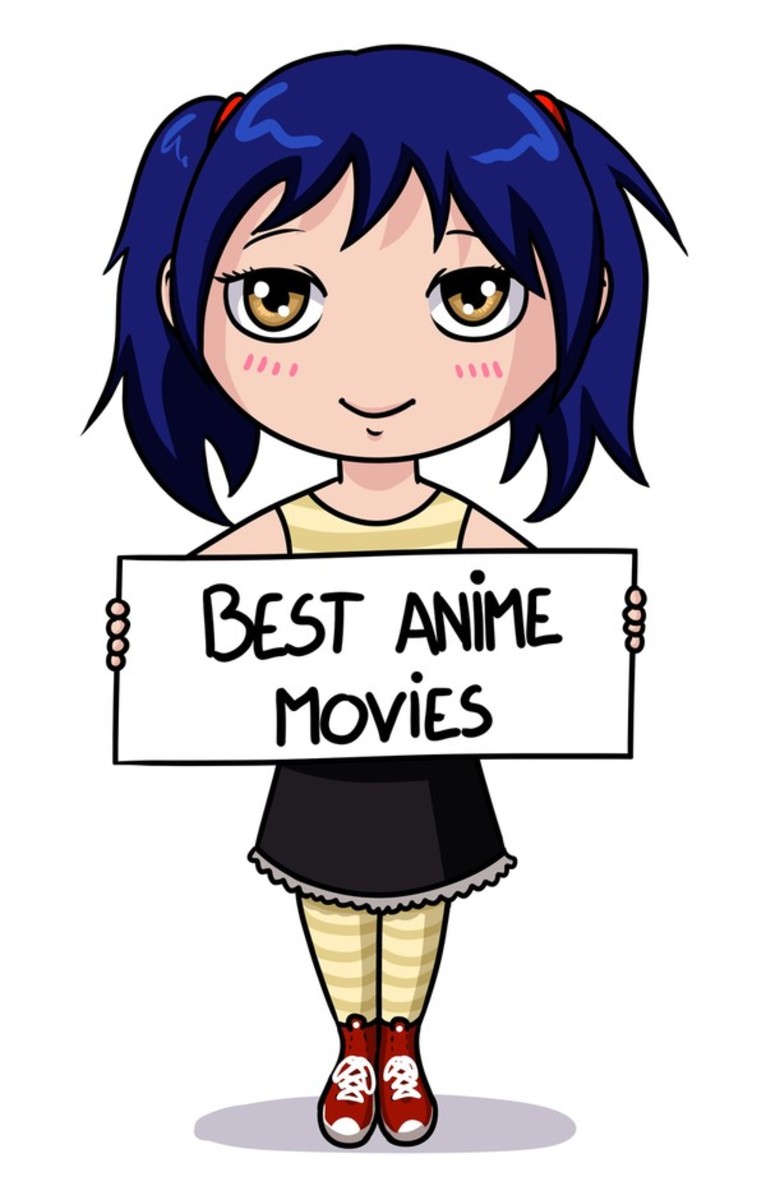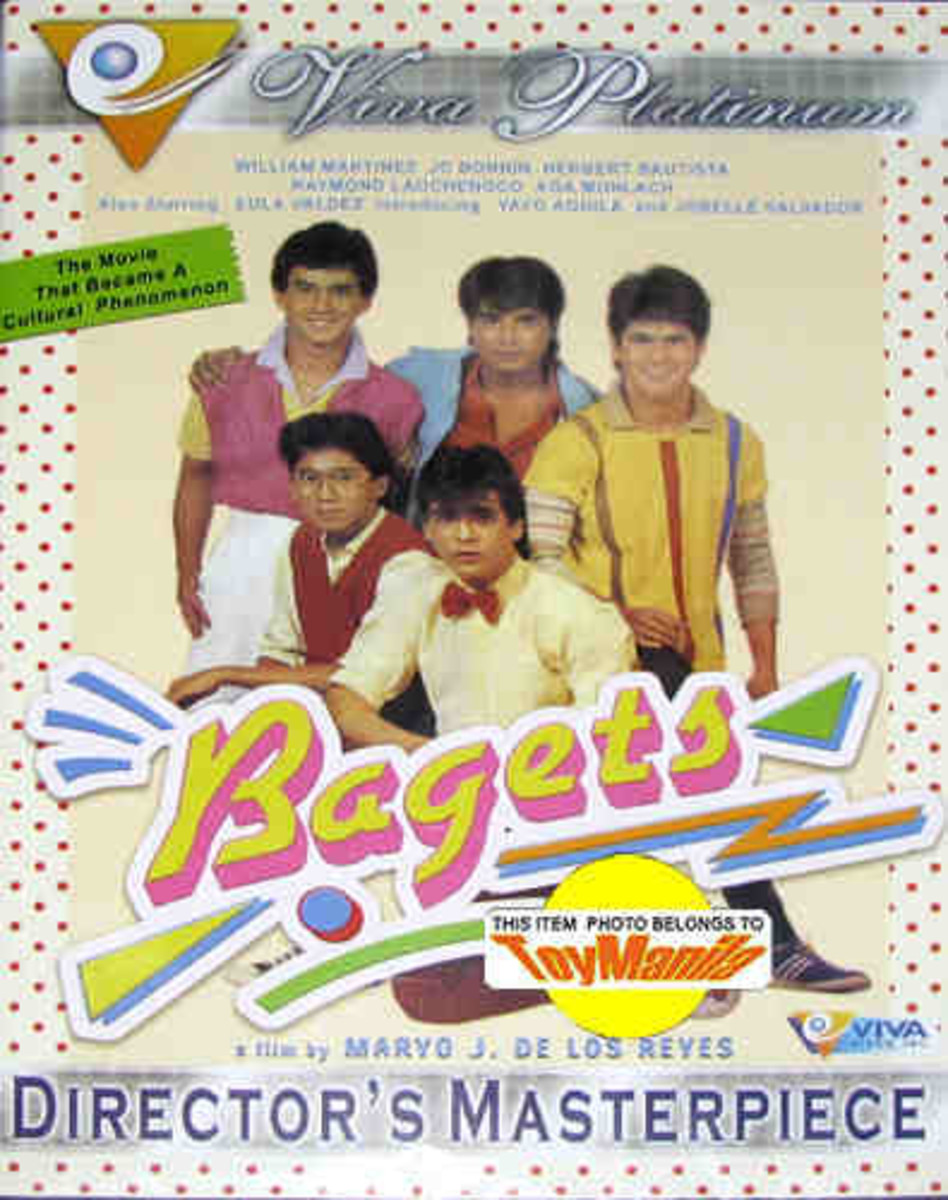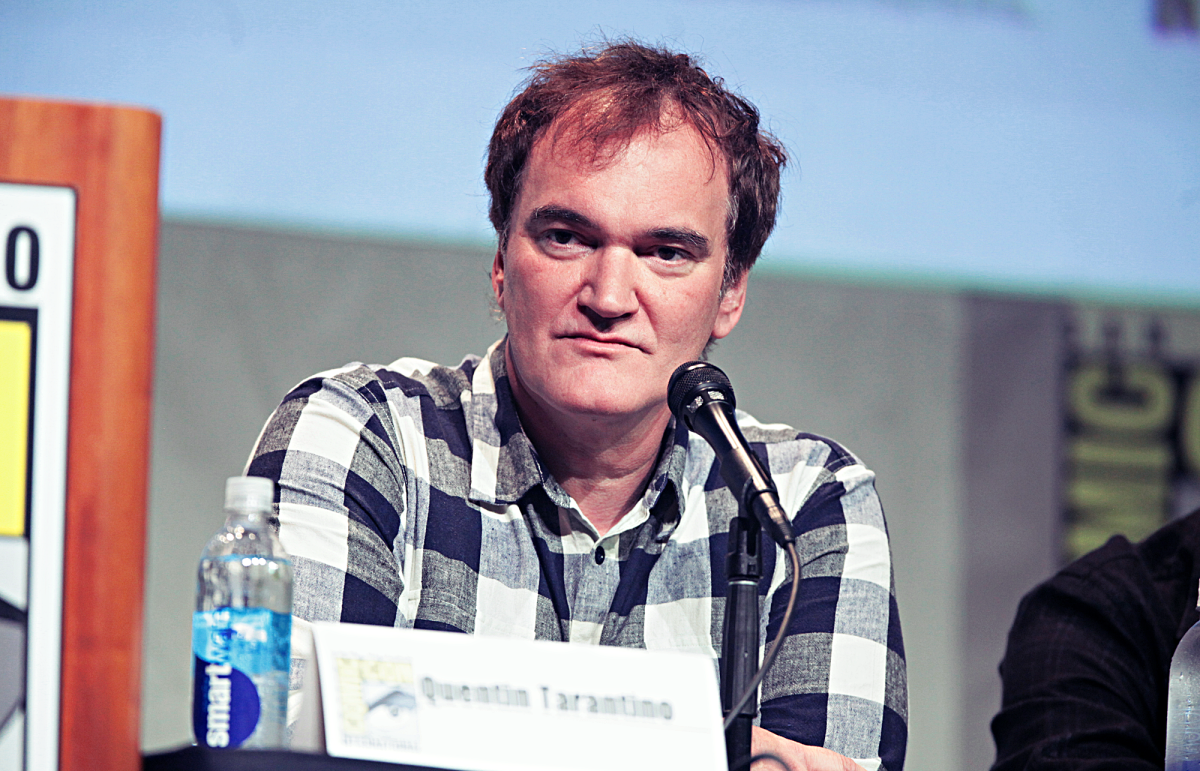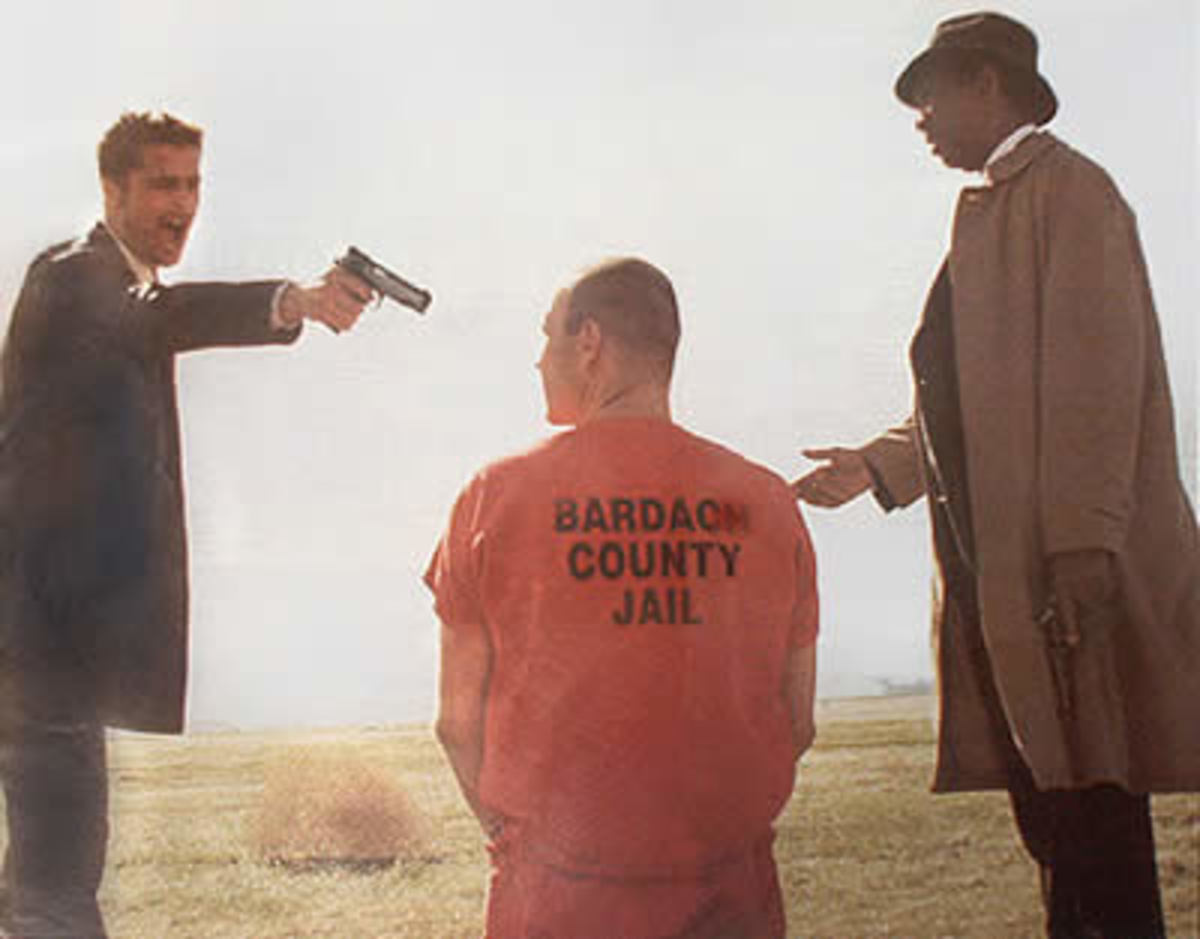Top 50 Favorite Films as of Summer 2014
Around this time every year, I look back on some of my favorite media, which started with albums and music and extended to films. This is more of a snapshot of what I like now than an end-all list. I tried my best to actually rank them according to how much I like them, but this was very difficult, as even picking 50 films and leaving some other great films out was a rather grueling task; I’m still a little shaky about my ordering of these movies. I also have a slight bias of putting films that I’m less familiar with at a lower rank than films that I’ve gotten to watching multiple times, unless the film really blows me away like some particular examples around the 20s and above. Because of this, if you see a film you like that’s below a film that you don’t like as much, then it’s possible that I just haven’t really gotten to seeing it enough for me to like it as much or perhaps—*gasp*— I just don’t like it that much. Either way, this is a list of favorites so it’s not like I’m trying to say that the films are necessarily the best films that cinema has to offer, and you can take or leave my opinion as you see fit.
Feel free to use Ctrl-F and type the number you're on if you had to come back to this, because this is pretty long. I hope this list helps you find some new films to watch and enjoy, and if you've watched all of them, then I hope you love these films as much as I do.
50. Scott Pilgrim Vs. the World (2010)
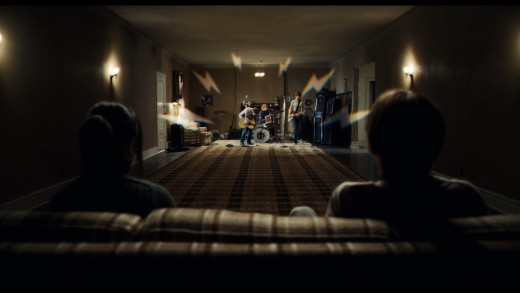
This movie’ll probably stick out like a sore thumb when compared to the rest of these films but as it stands, Scott Pilgrim Vs. The World is one of the best movies to be based on anything regarding video games, and if you ask anyone who’s been reading their graphic novels, they’d probably tell you that this one of the best movies to be based on graphic novels as well. Scott Pilgrim Vs. The World is an absolute blast of a film, with its frantic and hyperactive pace, equally adrenaline-packed sound and anime-esque editing.
This was the first film that I’d seen by director Edgar Wright, so when I first watched the movie I was completely unaware of what I’d be in for. Now that I’m at least a little more familiar with his films, I still always come back to this one as my favorite because it just has a lot more to offer. The music is a great blend of pulsing garage rock, electronic and indie tunes, and just the general look and feel of the movie is something you won’t find anywhere else, with its video game-inspired effects and visual design mixed with live-action. It’s just one of the most fun and over-the-top films I’ve ever seen, and I love it to pieces.
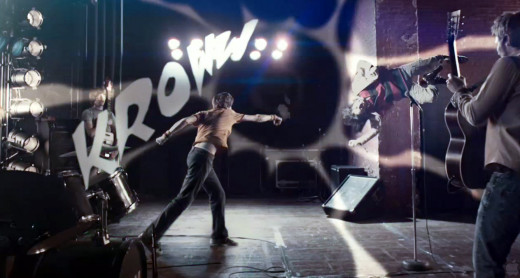
_________________________________________________________________
49.サマーウォーズ [Summer Wars] (2009)
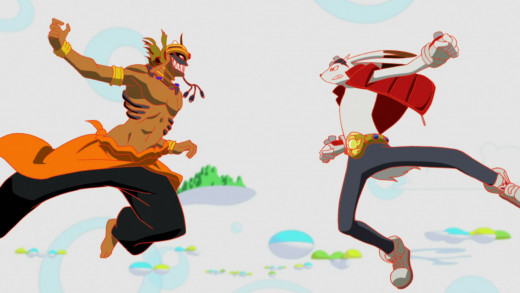
Apparently I’m just checking off the more hyperactive films from the list right away because here’s another incredibly entertaining and absolutely ridiculous concept of a movie. Summer Wars is Mamoru Hosoda’s weird bastard brainchild combining his direction in Digimon Adventure: Our War Game with family drama. I’ve never seen anything involving Digimon so I’ll just have to take the fans’ word for it when they say that Summer Wars is basically Our War Game 2.0. So if that’s the case, why even watch this film if it’s just a rehashed, perhaps improved version of another film by the same director, a Digimon movie no less? Because as silly as it sounds and as silly as this film is, Summer Wars has a lot of heart and a lot of touching moments in just the right places that really bring it home. If you watched the start of the film you’d never see that coming; this movie is just crazy and at times even cheesy, but the film’s too self-aware of that to take itself seriously, and benefits greatly from this. It’s a beautifully animated film about family while also having enough action to satisfy the child in anyone. I never would’ve imagined that a film where major plot events involve hanafuda card games and social networking could be genuinely moving, but then I watched Summer Wars.
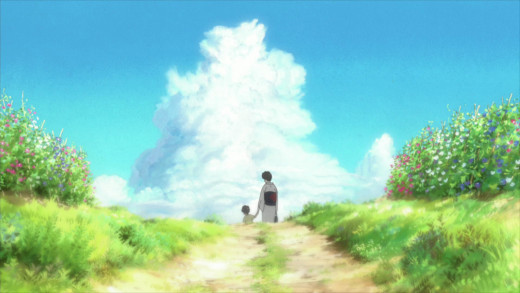
_________________________________________________________________
48. Indiana Jones and the Last Crusade (1989)
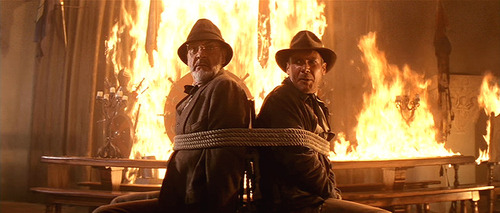
After watching so many films the past year, I’d have to say some of the love for Steven Spielburg and George Lucas’ films and for Hollywood in general has begun to fade, but these next two films were a large part of my childhood and thus hold a special place in my heart. Last Crusade has some of Hollywood’s best action sequences and some of the most memorable interactions between father and son, played by Harrison Ford and Sean Connery, respectively; and the entire film is just wildly entertaining. I can still remember the excitement and wonder I had as a child when I watched the film as Indiana Jones searched for the Holy Grail.Indiana Jones and the Last Crusade was my favorite of the trilogy and what I’d like to call the real conclusion to Indiana Jones’ story as a whole, because Indiana Jones was a trilogy and who wants to acknowledge the mess that is Indiana Jones and the Kingdom of the Crystal Skull?
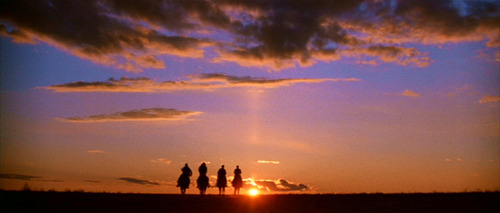
_________________________________________________________________
47. The Empire Strikes Back (1980)
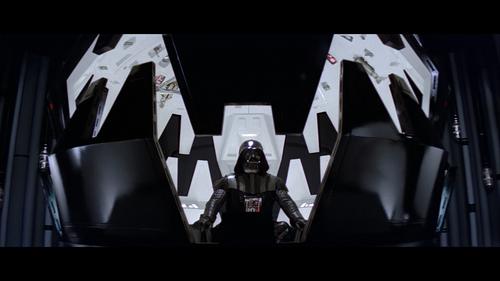
I think it’s safe to say that The Empire Strikes Back is the best film George Lucas will ever have a hand in, and from my understanding it’s the best Star Wars film to date. Whenever people want to make a Hollywood sequel done right, they should look to The Empire Strikes Back because it makes all the right (hyperspace) jumps in all the right places. Lame Star Wars puns aside, Empire really does improve on practically every aspect of the original film. Everything in the film oozes with greater heaviness and there’s a larger sense of suspense and mystery surrounding the events happening to the characters in the story. There’s much more development and interaction between these characters in a manner that’s more dynamic and believable, and all the actors that return from the first film step up their game quite a bit. The Empire Strikes Back is a legendary piece of Hollywood cinema, and compared to other films of a similar scale, it doesn’t have to be a three-hour epic to tell a story of epic proportions; it’s paced very well and throws in some twists in appropriate places. Visually it’s quite a spectacle and there are actually some really nice shots here and there that I wouldn’t expect to see in Star Wars or any Hollywood commercial success really. The Empire Strikes Back brings much more depth compared to the first film, which ultimately adheres itself to a very straightforward and common plot progression.
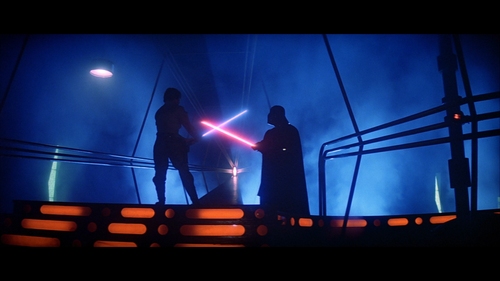
_________________________________________________________________
46. 風の谷のナウシカ [Nausicäa of the Valley of the Wind] (1984)
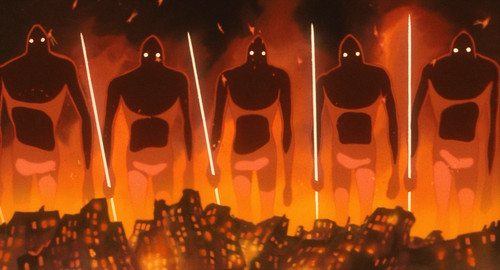
Nausicäa of the Valley of the Wind is proto-Studio Ghibli, and perhaps more importantly is that Nausicäa, when compared to the rest of Hayao Miyazaki’s films, really feels like a prototype to a later film of his, Princess Mononoke. When looking at the film in this light, I couldn’t help but subconsciously degrade the film a bit and consider leaving this film out of the list. However, upon further consideration, it’s clear to me that Nausicäa of the Valley of the Wind is ultimately a film of great cultural importance. It not only—perhaps unconsciously—serves as a blueprint for what I would call a superior film, but a creative inspiration, as many of the elements and designs seen in Nausicäa would impact much of Japanese pop culture. A largely famous and obvious example of this would be Nausicäa’s influence on the internationally popular video game franchise, Final Fantasy, whose original creator Hironobu Sakaguchi has directly stated the film’s influence on creature designs and elements of his games, such as the Chocobo birds, plots revolving around fighting oppression brought about by a towering military power, and the games’ affinity for flying airships. With Nausicäa’s legacy being apparent in Japan’s pop culture, it’s easy to forget that the film was really a pretty great one in its own right, with Hayao Miyazaki, composer Joe Hisaishi and Hideaki Anno (Neon Genesis Evangelion) all involved in its development; Nausicäa of the Valley of the Wind is truly a landmark film in Miyazaki’s filmography.
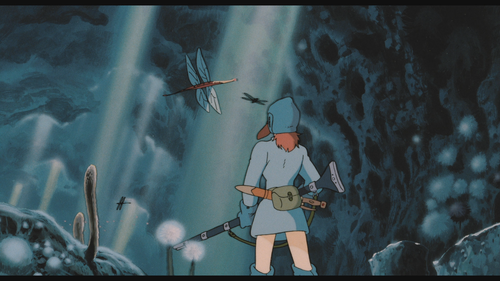
_________________________________________________________________
45. Indie Game: The Movie (2012)
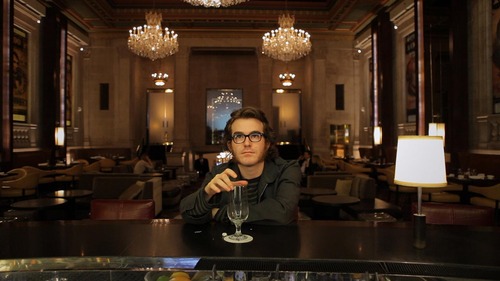
This one’s a bit unexpected but the more I think about it, the more I feel strongly about this film being important enough to me to be placed on the list. Indie Game: The Movie is a documentary that follows three indie game developers that practically launched independent game development to great heights and popularity. It tells the story of Jonathon Blow, creator of Braid; Edmund McMillan and Tommy Refenes, creators of Super Meat Boy; and Phil Fish, creator of Fez. I’m very attached to this film because it’s been an inspiration to me as someone who wants to create things as a writer. To these people, creating video games is their way of expressing themselves and sharing themselves with the world and it’s their art. Not only am I someone who believes that video games as a medium can be an artform to the highest degree but I’m also someone who expresses himself through art, too. So to see their struggles and their attempts to trump them is a very rewarding and inspiring experience. Go watch this film, and then go play their respective games; they’re all absolutely spectacular.
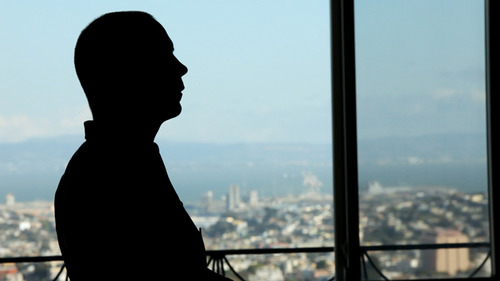
_________________________________________________________________
44. 無間道 [Infernal Affairs] (2002)
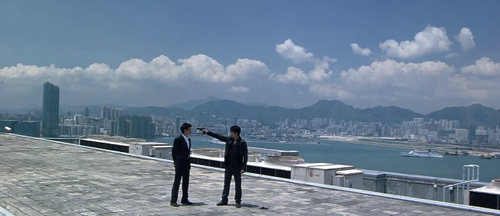
In spite of all the limitations that were placed upon it, Infernal Affairs uses them to its advantage with great finesse and style. The storytelling is brisk and fast-paced and yet it’s concise and gives you all the information you need to understand what’s going on. Just within the first five minutes of the film, all of the exposition—two young men being planted as moles; one being an undercover cop shadowing a drug cartel, and the other being a cartel member masquerading as a police officer; both climbing the ranks of their respective roles—are told to the viewer with great detail and brevity, leaving the rest of the runtime for action and intrigue with no interruptions. That alone is just done to absolute perfection that even with some of the flaws this film has, like a rushed romance and melodramatic moments, it all feels necessary and irremovable from the film and I can’t help but love this film so much. The performances are strong and the movie builds tension so well and with so much style that it’s all very memorable and rewatchable. All of this makes Infernal Affairs still the better pick between this film and its American remake, The Departed, which ironically has the clear advantage at making a better film with its two and a half hour long runtime, bigger budget, and room for development.
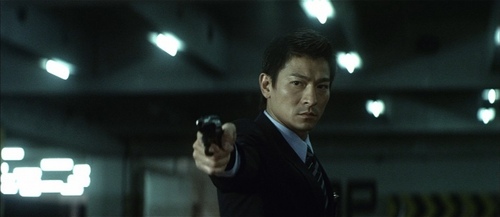
_________________________________________________________________
43. Le samouraï [The Samurai] (1967)
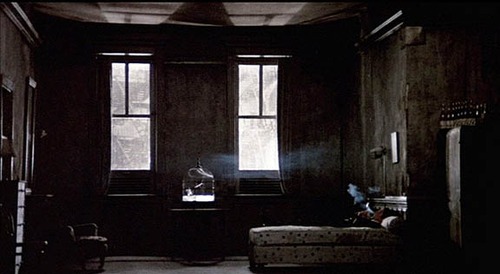
Le samouraï is a French crime film that seems to favor rather ironic situations while maintaining an exterior of subtlety or understatement. The film misses the French New Wave—an influential, game-changing movement of cinema—just as it was ending and dying out, but it doesn’t really rely on the brash stylings or emphasize a desire to break free of cinematic tradition like its nouvelle vague (t-that’s French for “new wave”, just in case you were wondering…)compatriots, but rather draws from archetypes of film noir and American gangster films. Even so, there’s something so quintessentially French about the film and its influence on crime films after it is so evident that it remains a unique piece of cinema, and it’s commonly hailed as director Jean-Pierre Melville’s best film. While I wouldn’t be able to chime in on the latter statement, it’s certainly one of the most memorable films of its kind that I’ve seen. The film follows a lone hitman who seeks to escape his cycle of murder after taking one last job, and with its perfect suspense-building (all those damn keys) and sparse plot that prevents the film from devolving into convolution, Le samouraï is the definition of cool.
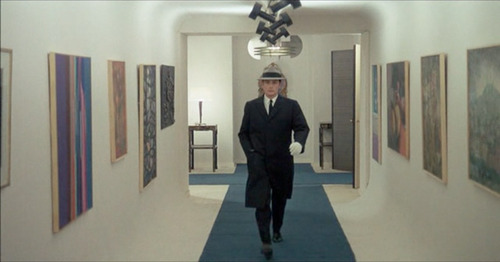
_________________________________________________________________
42. Jules et Jim [Jules and Jim] (1962)
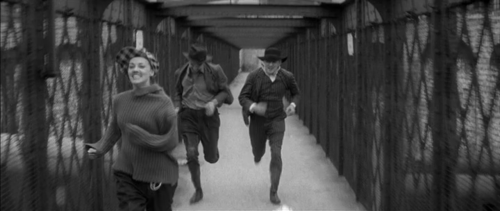
Jules et Jim is one of the most jarringly erratic and yet strangely solemn films to ever touch on the dynamics of romance that I’ve watched, and it does so in a vaguely ironic fashion that still has an arresting air of truth to it. The film centers on the eponymous duo and their mutual infatuation with an upbeat and entrancing woman, Catherine, played famously by Jeanne Moreau, who brings a very charming performance. The entire film itself has a lot of humor and as a film by François Truffaut during the French New Wave, it has a great balance between stylistic sarcasm and honesty. A story about friendship and how (and if) love works when more than two are involved, Jules et Jim brings out all sorts of emotions in its viewers with its infectious charm.
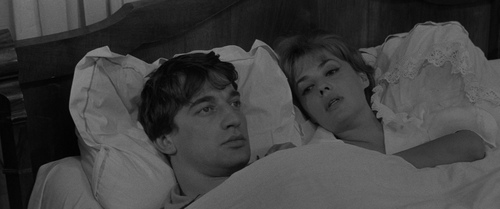
_________________________________________________________________
41. 蜘蛛巣城 [Throne of Blood] (1957)
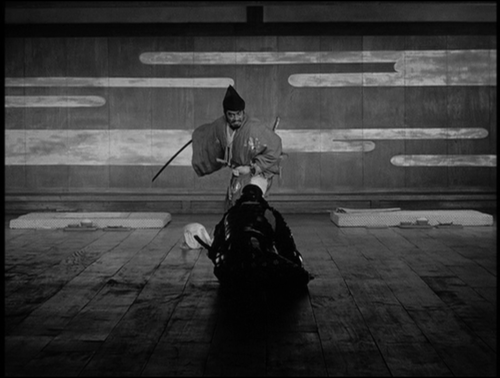
Apparently one of poet T.S Eliot’s favorite films, Akira Kurosawa’s
Throne of Blood is essentially William Shakespeare’s Macbeth set in feudal Japan. While my previous statement probably sounds degrading or dismissive of the film, this is far from the case as it seems clear to me that this adaptation of the Shakespeare play is probably one of the best Shakespeare film adaptations to ever hit the silver screen. By translating Macbeth to a completely different cultural setting, watching the film portray the play’s plot to a T is an astonishingly fresh experience that draws from both the English and Japanese theater. The film creates a really strong sense of foreboding and dread and this is accomplished by Kurosawa’s prominent usage of real fog and fog effects as well as some of the most eerie and frightening spirit and ghost imagery. Throne of Blood is a masterfully done paragon of a Shakespeare adaptation that has yet to be dethroned.
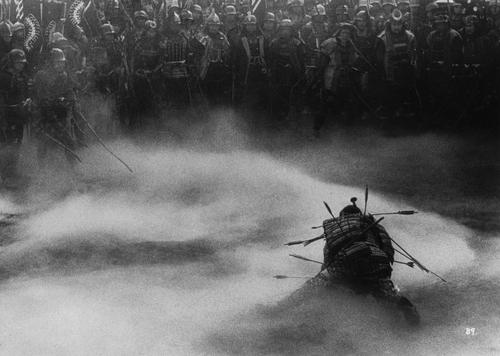
_________________________________________________________________
40. Сталкер [Stalker] (1979)
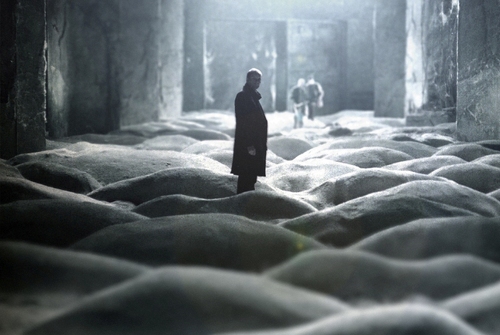
Stalker is a carefully-crafted, carefully-paced journey that carries great emotional weight while opening itself up for interpretive subjectivity. Like many great films with a nearly three hour-long runtime, Stalker invites us to delve into the plot at a slow, meditative pace that paradoxically doesn’t feel as sluggish or tiresome as you might think. In a post-apocalypse world, there is an allegedly perilous Zone that houses a place called the Room, which supposedly grants whoever enters his or her greatest desires. The film follows a Stalker—a professional guide of the Zone—as he helps his clients, a Professor and a Writer, navigate to the Room. It assaults the viewer with not only barren yet strangely beautiful landscapes and meticulously arranged shots, but also with philosophical queries and ponderings. In fact, having only watched the film once, I admittedly still find myself unsure of what to make of some aspects of Stalker, but the film deserves my second viewing just as much as it deserves anyone’s first. It’s a film that attempts to tackle some of life’s most difficult questions and only attempts to supply suggestions at how to answer them, and Tarkovsky executes this with a virtuosity that doesn’t feel heavy-handed.
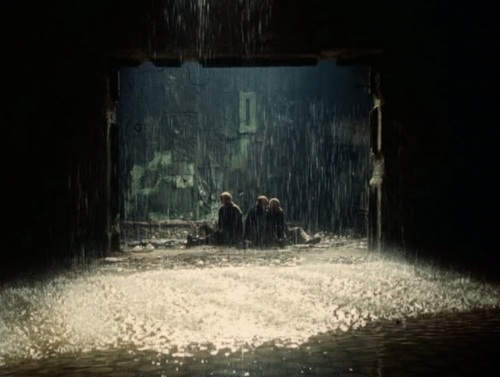
_________________________________________________________________
39. Trois couleurs: Blanc [Three Colors: White] (1994)
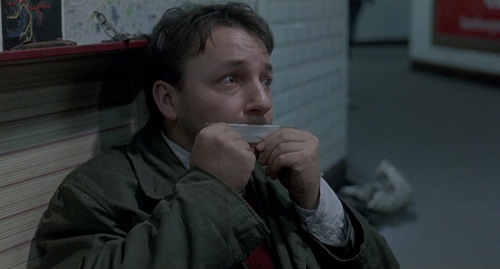
Trois couleurs: Blanc is the second film in Kryzsztof Kieślowski’s Three Colors trilogy, it’s perhaps the most political of them all, and unfortunately it’s my least favorite of the three films. That said, Trois couleurs: Blanc is a still an excellent film that explores one of the French Revolutionary ideals (liberté, égalité, fraternité) in a human context, equality. What this means could be explained by some of the questions that this film raises by following the story of Karol Karol, a Polish man who attempts to get even with his ex-wife, Dominique, as she has, in the greatest sense of the word, humiliated him. Kieślowski’s film asks its viewers, “What does it even mean to be equal? And is that even something human beings want—to be equal with everyone else?” While Karol experiences quite a lot of pain from the events of the film, it’s actually vaguely amusing to watch, and some of the misfortunes that happen to him are pretty comical and ridiculous, leading some to call Blanc a black comedy. I’m not quite sure if I’d like to tag it as such, but it’s still a film that’s both very entertaining and effective in expressing its ideas.
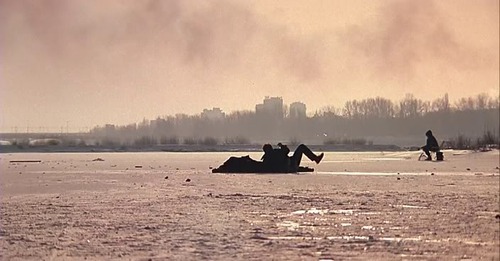
_________________________________________________________________
38. Blade Runner (1982)
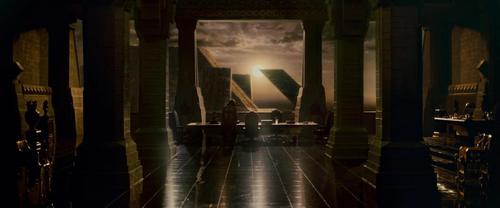
This and Gladiator are the only Ridley Scott films I’ve ever watched so I can’t really say much for what sorts of films he would make, but it seems to me that Blade Runner is the exception to the rule; it’s probably as art film as Hollywood’ll get. Blade Runner blurs the line pretty well, as it tries to express some interesting questions about humanity while also providing some exciting action and intrigue, the latter taking cues from film noir in its compositions of shots and effective use of contrasts between light and dark. Like most of the better Hollywood films out there, Blade Runner pushes the limits of special effects of its time in its cyberpunk setting, and uses its inevitable product placement in great taste and not seeming like a colossal cash-in (perhaps even the opposite, as apparently all of the brands featured in the film turned out to suffer from huge commercial losses soon after the film’s release). Blade Runner establishes its setting and mood with ease as all of the pieces come together perfectly; the visuals are brooding and dark and Vangelis’ synth-dominated soundtrack is ethereal and atmospheric, and is commonly hailed as one of the greatest scores in a motion picture. While I do feel now that some of its attempts to transmit messages feel as blatant as symbolism in a John Woo film (the freakin’ doves, man!), the rest of the film’s stronger suits really keep that from turning me off from the film. Blade Runner is one of the best science fiction films to watch, and it’s one of the best Hollywood has to offer.
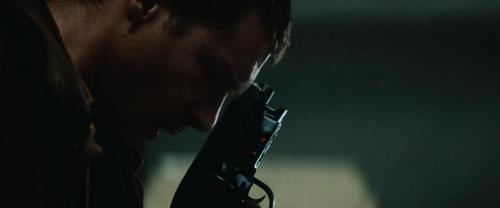
_________________________________________________________________
37. کلوزآپ [Close-Up] (1990)
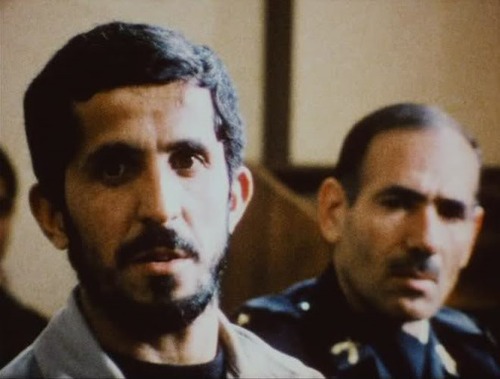
Close-Up is a documentary film that’s not really a documentary film that’s about films while seemingly not being about films. If what you just read is bafflingly confusing then it simulates exactly the way I felt after I watched the film and tried to process what the film was really trying to convey. This isn’t because the film itself is confusing or that it conveys things poorly, but what it stands for as whole and as a concept takes a little organizing in the head. Close-Up is from what I can tell, the epitome of what Iranian director Abbas Kiarostami does and tries to convey in his films, which always has an underlying metanarrative or metafictional theme weaved into the story of the film. In this case, the film is shown to the audience as a documentary film about a man who was tried in court for impersonating a director and pitching a film to scam a wealthy family. The fact that it’s a documentary about a man who impersonates a director already shows a degree of commentary on cinema itself but the most intriguing aspect of this documentary is that while it’s filmed like a documentary and it looks like one and it is, in effect, a documentary; the truth is that it is actually a reenactment of a true story, played out by the actual people involved in the events of the story, who are now actors playing out their own life. It’s this really weird stroke of brilliance that drew me to the film and after watching the film I wasn’t disappointed because it was really engaging and fascinating to me. The acting is pretty great despite the fact that these are people who weren’t trained actors when they starred in the film, and Kiarostami always paints very beautiful images and shots in his films and this one has a lot of great examples of such. Close-Up is beautifully constructed and filled with layers of commentary and thus worth any dedicated film viewer’s time.
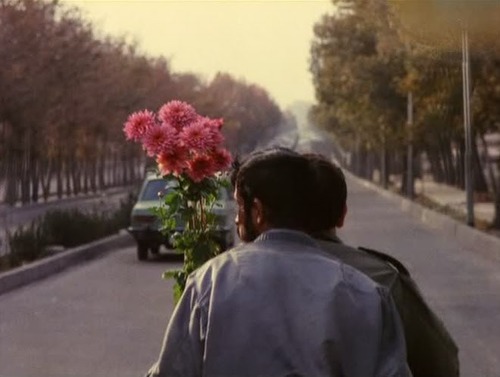
_________________________________________________________________
36. La Passion de Jeanne d’Arc [The Passion of Joan of Arc] (1928)
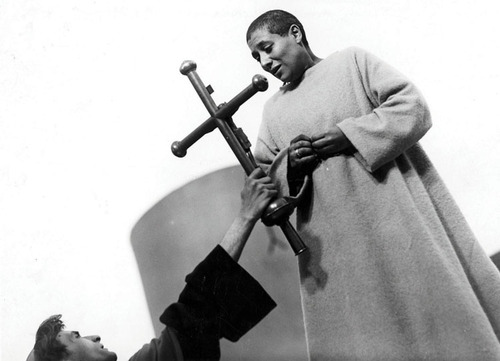
La Passion de Jeanne d’Arc is one of those films that oozes with particular importance because of its influence on the entire medium of cinema in general. That said, this silent film on its own doesn’t really hold as much personal weight for me as some of these other films. That said, this film is incredibly powerful with how it uses its lighting and cinematography to really bring out a lot of emotions from the viewer. Like another important early film, Battleship Potemkin, the use of montage and editing is so poignant in this film that you can’t help but feel emotional; it’s almost propagandistic how heartbreaking this film is. These beautiful images are all made even more memorable by the presence of Renée Maria Falconetti, who plays Joan of Arc; Falconetti really carries the film and makes it what it’s known for today as it is her expressions and demeanor that just devastate people. Sure, it’s a little dramatic at times, but seeing how it’s a silent film, the actors need to be incredibly expressive, and Falconetti does it perfectly. The DVD I watched it with had the option to watch it with musical accompaniment; I decided that I’d watch it silent because perhaps this was how the film was supposed to be viewed, and the fact that there was absolutely no sound— no score to sway my emotions—and I was still moved really shows the level of effective expression that this film has even without words or sound.
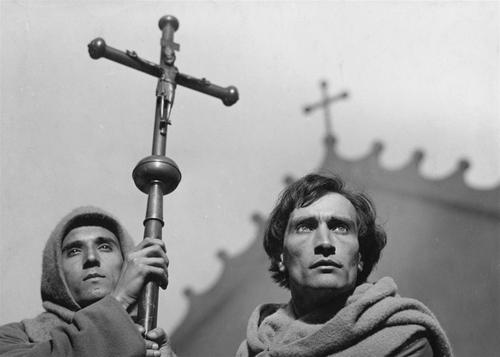
_________________________________________________________________
35. The Thin Red Line (1998)
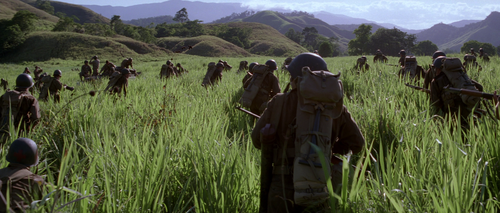
One of the few war films on this list, The Thin Red Line is one of the best of its kind because it carries a great sense of humanity and handles its treatment and portrayal of war with care while avoiding glorification. Director Terrence Malick paints a paradoxically terrifying and beautiful picture of the events at Guadalcanal, as he melds the horrors of war with the natural wonders of the Pacific battlefield. With a large ensemble cast, the film is fleshed out in breathtaking detail as it follows various soldiers’ stories (with hours of stories and whole performances completely cut from the final edit of the film), the things they left behind and lost and the things they gain from fighting in the Pacific Theater of World War II, for better or worse. This expansive, all-encompassing nature of the film culminates to a grander, metaphysical exploration of the relationships between humanity and nature and their inevitable spirals toward death.
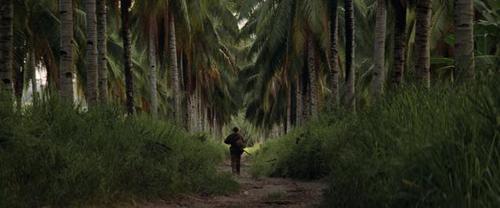
_________________________________________________________________
34.春光乍洩 [Happy Together] (1997)
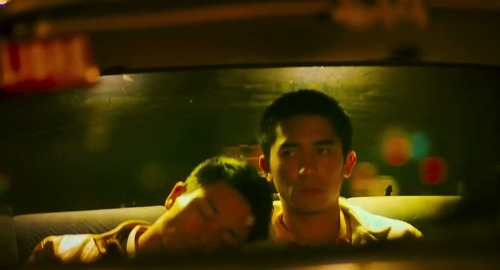
Cantonese director Wong Kar-Wai may very well be the director that makes the most romantic films I’ve watched, and for many this film is a testament to his ability to create films with very grounded and realistic romances that simultaneously have a very dreamy aesthetic to them. Happy Together is a film about a rather dysfunctional Cantonese gay couple who had traveled to Argentina on vacation, and follows the ups and downs of their relationship as they struggle to find a way back home. Wong Kar-Wai typically takes some cues from French New Wave in his films, and this certainly shows in this one in particular, with an intensely stylish flair pervading its wildly colorful cinematography, complemented by a smooth soundtrack. Happy Together’s plot itself is rather sparse and meandering, and while some might find this distracting, the wandering and aimlessness feels appropriate given how the events of the plot unfold and what the film tries to express. The film’s notable for being a film about a gay couple, and unlike films like Ang Lee’s Brokeback Mountain, Happy Together doesn’t try to play off their relationship like some sort of over-romanticized tragedy, but rather portrays the romance in a way that feels universal and relatable to anyone who’s been through any sort of loneliness or romantic longing, and perhaps this is Happy Together’s strongest suit.
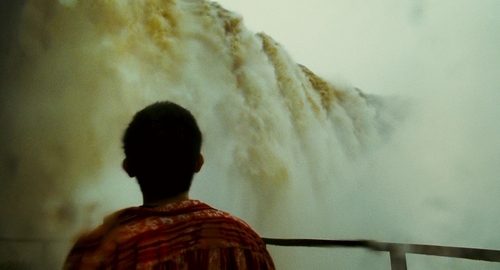
_________________________________________________________________
33. おもひでぽろぽろ[Only Yesterday] (1991)
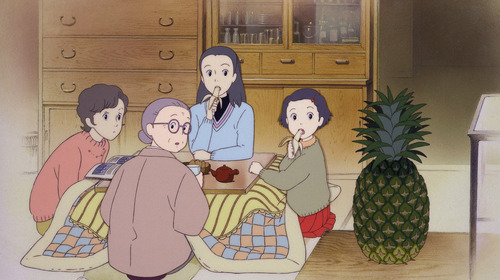
Of the two renowned directors of Studio Ghibli, Isao Takahata’s filmography is undoubtedly and unfortunately overshadowed by the international success of Hayao Miyazaki’s films. Only Yesterday is an underrated gem from an already underrated director, as it tells a coming-of-age drama in an extremely effective yet effortless fashion, filled with subtlety and charm that brings out memories and emotions of childhood and growing up and family drama. It places the experiences of 27-year-old Taeko alongside her five-year-old self in a parallel narrative, which in turn really strengthens the viewer’s understanding of Taeko’s characterization and her mannerisms. Only Yesterday truly shines in some of these charming five-year-old sequences, where Takahata’s direction leads to dreamy imagery and interesting editing choices that really drive Taeko’s perspective on the situations home. The outright mundane events in some scenes of the film are displayed with such expressive detail and nuance that you can feel the tensions and emotions felt by each of the characters, and is kind of evocative of Yasujiro Ozu’s work. The animation complements this brilliantly, as the expressions on the people’s faces are drawn often with wrinkles and laugh lines, which is actually a relatively uncommon thing to do in anime (the reason why there isn’t a lot of detail in anime characters’ faces generally is to save time and money). Aside from character designs, the animation in general is simply gorgeous to look at and free of computer-generated animation which is something that I wish was still present in today’s animated films.
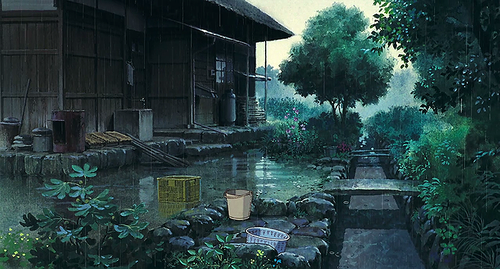
_________________________________________________________________
32. The Royal Tenenbaums (2001)
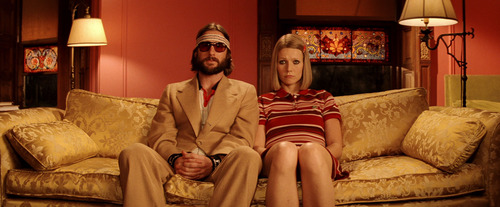
Wes Anderson’s been finding a lot of success as of late, with his most recent Grand Budapest Hotel being one of his most commercially and critically successful releases in his filmography. And yet I can’t help but feel very disenchanted with Anderson’s latest works; I feel as if he’s lost a lot of substance as his greater emphasis on aesthetics and style, his use of meticulously constructed miniatures and his obsession with symmetry, begins to overtake his previously masterful craft of writing very believable characters in the midst of rather fantastical situations. The Royal Tenenbaums is arguably Anderson’s character development magnum opus, juggling a large ensemble cast as they play out a wildly hilariously and entertaining yet emotionally stirring family drama. Not one role in this film gets downplayed or forgotten and their parts are parsed out accordingly. And that’s not to say that The Royal Tenenbaums is lacking in the style department, because it still houses Wes Anderson’s signature shooting and bright color scheming and this is a prime example of Anderson using these things when necessary and thus to greater effect. The Royal Tenenbaums’ laugh-out-loud humor still leaves room for resonant moments (“Needle in the Hay”), and all of its parts fit together and complement each other perfectly, making it fairly easy for me to call it Wes Anderson’s finest.
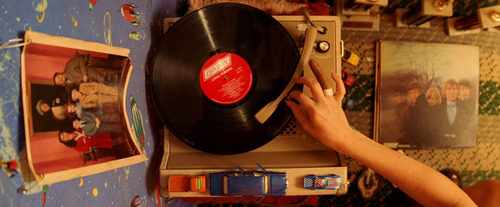
_________________________________________________________________
31.七人の侍 [Seven Samurai] (1954)
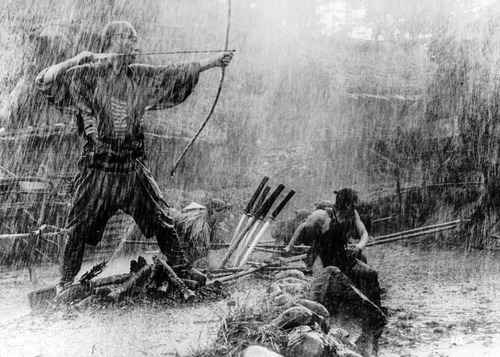
A rather straightforward but powerful tale, Seven Samurai is easily one of the most acclaimed films of all time, and while perhaps I don’t like it as much as some do, I’d still like to sing its praises. Like the last film on the list, it carries a large number of characters that are fleshed out with ambitions and perspectives on the situation at hand. As bandits plunder and harass a village in the countryside, harming innocents; the village looks to the aid of seven rōnin, lordless samurai, to fortify and bolster a defense to fend off the bandits’ eventual invasion. The film showcases excellent, believable performances from the cast; expressive cinematography; influential plot development; and carefully constructed sets that really help the viewer invest herself emotionally. An ambitious and impressive feat for its time, Seven Samurai holds up incredibly well today and uses its three-hour runtime to its fullest.
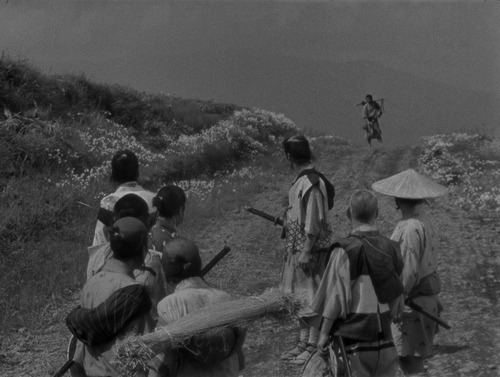
_________________________________________________________________
30. 時をかける少女 [The Girl Who Leapt Through Time] (2006)
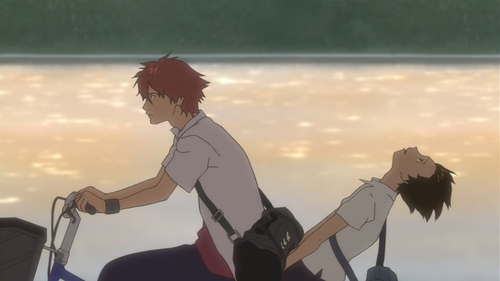
I probably love this movie too much. I’ve seen it about seven or eight times by now. I never thought I’d like an animated high school drama film so much, but The Girl Who Leapt Through Time is a high school drama film done right, and while we’re at it, The Girl Who Leapt Through Time is also a time travel film done right which really makes it a pretty impressive feat since no one ever does that right these days, let alone both at the same time. But what makes it so great is how perfectly paced the film is and the stellar character development, which makes it so damn easy to watch this film several times on end. There isn’t really another film that makes me feel nostalgic for my high school days, but the writing handles it so well in spite of the science fiction elements of the plot that even if you despised your time in high school, you can’t really help but look back on those years of your life. Centering on three friends with a narrative focus on Makoto, who discovers she can “time-leap” back to select moments in her life and change their outcomes, the film evokes memories of spending time with close friends after school and perhaps, in hindsight, rather silly romantic encounters. Along with the believable writing and character relationships is the really clean and smooth animation, which has a lot of charm and humor to it while still looking beautiful and some of the backdrops are just drop-dead gorgeous. While I admit that I have quite a soft spot for this film as I feel that it does have certain flaws, The Girl Who Leapt Through Time is a charming and touching film that can be watched again and again.
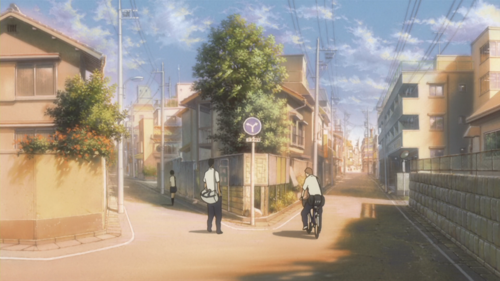
_________________________________________________________________
29. Der Himmel über Berlin [Wings of Desire] (1987)
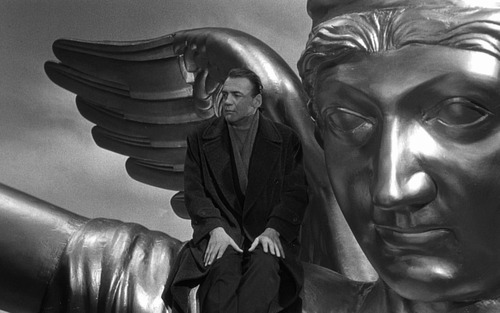
I took a cinema course last semester, and my professor made this film a required viewing in his curriculum simply because it was his favorite film. “It’s like my medicine,” he’d always tell the class, “whenever I’m feeling down or depressed about the world around me, I’d watch this movie and I’d feel better about things.” Der Himmel über Berlin isn’t exactly a cure-all for my own times of depression or sadness, but it certainly is a really cathartic experience. Perhaps the reason why this film sticks with my professor so much is because unlike me, he actually lived through the years surrounding the Berlin Wall’s collapse, and this film encapsulates sentiments of the events occurring in director Wim Wenders’ time so well that it really gets to even me, as someone who doesn’t really know what it was like to live in those times. Der Himmel über Berlin was made and set in West Berlin before the Berlin Wall collapsed, and follows the story of mainly two angels, Damiel and Cassiel, who have been roaming around the city along with other angels to comfort the people living there despite them mostly not being able to acknowledge their existence. Particularly, as Damiel wanders through Berlin, he finds himself falling in love with a trapeze artist. As the film is primarily told from the perspective of an angel, the cinematography accommodates this with sweeping shots and (mostly) slow, smooth panning. Der Himmel über Berlin paints such a delicate portrait of both Berlin and its inhabitants in such a way that makes the film so poignant and sometimes emotionally intense, and it oozes with subtext and poetry that range from allusions to Homer to live performances from Nick Cave and the Bad Seeds. To me, it’s not medicine, but it’s a powerful film with layers of substance and emotion.
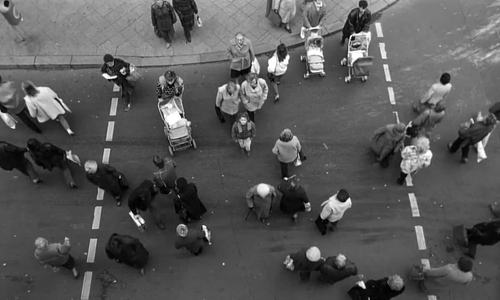
_________________________________________________________________
28. The Tree of Life (2011)
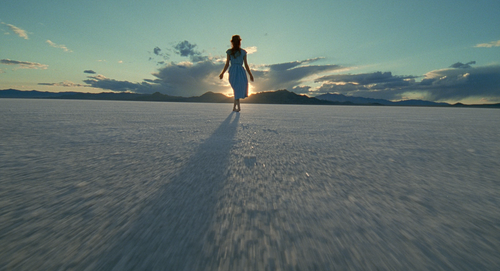
Like The Thin Red Line, Terrence Malick’s Tree of Life is an impressive and ambitious cinematic feat. Massive in scale and scope, The Tree of Life attempts to tackle the problem of evil and other transcendent topics and, perhaps, grants an answer. But even as someone who is skeptical of the answers it gives, I can’t help but be swept away by the film’s beauty, as all of the ways this film is visually composed is an arresting sight for sore eyes. Malick’s affinity for natural light and nature really pays off here, as The Tree of Life has an incredibly clean aesthetic with lush colors and stunning picturesque portraits. The film mainly tells the story of a boy living in the 1950’s but weaved into this is an epically proportioned creation sequence that evokes 2001: A Space Odyssey. Perhaps one of the film’s greatest achievements is being able to place something so large and so expansive alongside an intimate story of growth and relationship. I wish I loved the film even more than I do, but unfortunately I feel that certain editing choices and pacing issues hold it back from being just short of perfect.
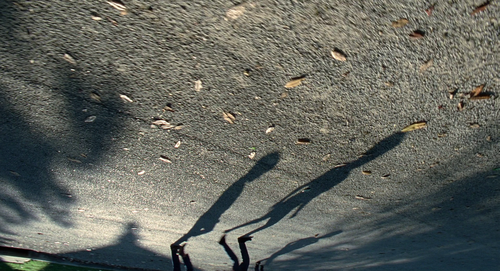
_________________________________________________________________
27. Pulp Fiction (1994)
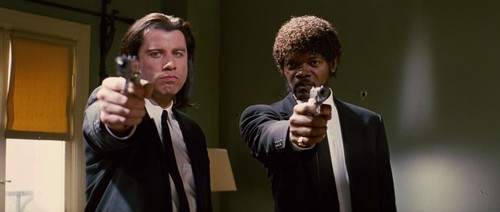
One of the most entertaining movies to come out of Hollywood, Pulp Fiction is Quentin Tarantino’s black comedy masterpiece that uses a larger narrative with several plots weaved into it. Mainly, it follows the story of Vincent Vega, Jules Winnfield and Butch Coolidge in three arcs and each of them are both compelling and hilariously funny. This is mostly accomplished by Tarantino’s trademark ability to write crude but believable and/or memorable dialogue that occasionally meanders into musings and monologuing. The film’s paced wonderfully and supplemented by the groovy soundtrack, and many of the film’s performances are highlights in the actors’ careers (Samuel L. Jackson, ‘nuff said). The epitome of Quentin Tarantino’s filmmaking, filled with laugh-out-loud humor and gratuitous language and violence, Pulp Fiction is a landmark American classic.
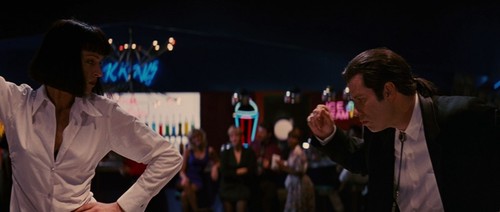
_________________________________________________________________
26. 風立ちぬ [The Wind Rises] (2013)
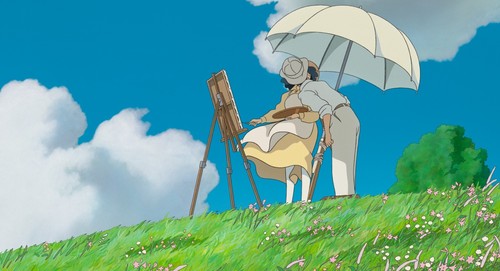
Being Miyazaki’s final film, The Wind Rises really was the culmination and conclusion to his career and a bold expression of his concerns and views. A fictional telling of Jiro Horikoshi’s life and career, Miyazaki channels himself through Horikoshi’s experiences. It isn’t a biopic as much as it is almost more biographically about Miyazaki as it is about Horikoshi, and sometimes it almost feels like he’s just excitedly gushing about his passions of flight and pacifism to the point of jargon, but even then it’s done with such a vaguely giddy innocence that I can’t help but feel glad about it. The Wind Rises is a lot more grounded and melancholy than his previous work, and ultimately it’s quite a departure from his usual oeuvre, but it still feels fitting that he would make a film like this to end his career, and it truly is a beautiful film.
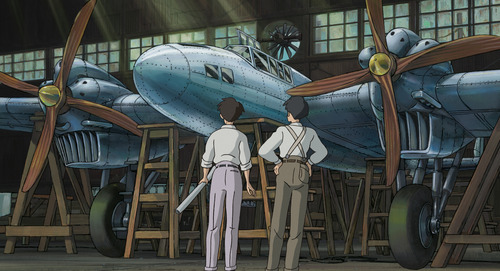
_________________________________________________________________
25. Manhattan (1979)
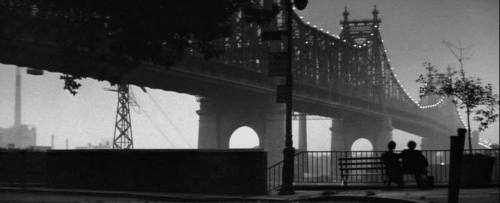
Set to the sounds of Gershwin and shot in lovely black-and-white photography, Manhattan is Woody Allen’s ode to New York City that, like his grandest works, explores the both the silliness and seriousness of romance in a way that no one else can. Allen’s witty banter is as biting and perhaps semantic as ever, and it still makes me laugh just as hard as the first time. The acting from Allen, Keaton and Streep is stellar, with a notably impressive performance from a then sixteen-year-old Mariel Hemingway. While I do think there are certain things lacking in this film, it also houses some of my favorite lines of dialogue in cinema and in my opinion one of the best endings a film can have. A highlight of Allen’s career, Manhattan balances high-brow humor with moments of sentimentality in brilliant fashion.
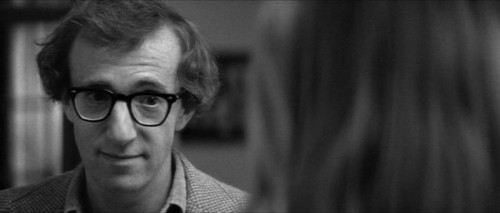
_________________________________________________________________
24. There Will Be Blood (2007)
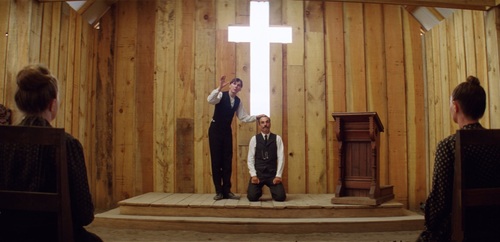
Based on the Upton Sinclair novel, Oil!, There Will Be Blood tells the story of oilman Daniel Plainview and his prospecting and drilling endeavors in the town of Little Boston, California, as he finds himself often at odds with an equally ambitious young preacher, Eli Sunday. Daniel Day-Lewis and Paul Dano bring memorable performances as Plainview and Sunday, respectively, and they’re complemented by the film’s biting dialogue and effective pacing. The direction is also top-notch, the cinematography often showing very wide expansive shots that are fitting to the film’s California setting. Music direction is strong too, with Jonny Greenwood of Radiohead helming the score and selecting great works from Brahms and Pärt for the soundtrack. Perhaps the strongest aspect of the film and the thing about it I value the most is its excellent character development, which really carries the film with one of the most tragically ambitious characters and the most heartbreaking relationships between him and his son. There Will Be Blood is a fine piece of cinema and a great American epic.
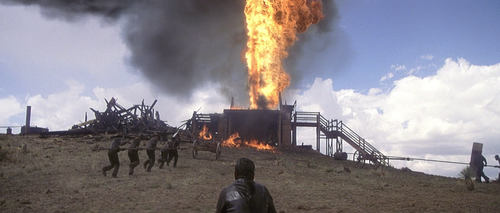
_________________________________________________________________
23. 東京物語 [Tokyo Story] (1953)
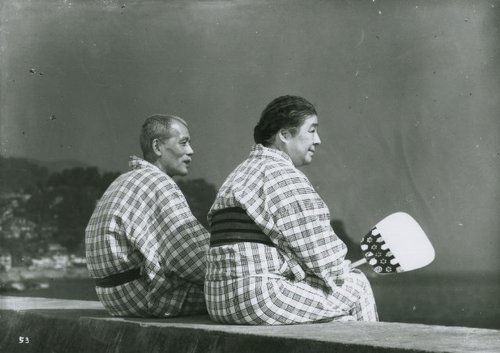
Often hailed as one of the greatest films ever made by critics, Tokyo Story is Yasujiro Ozu’s family drama masterpiece, involving an elderly couple who travels Tokyo to visit their children who have all grown up and are occupied with their own lives. The film is slow and delicately paced, and this is complemented by a really stationary camera and longer takes, all which are things that Ozu is known for in his direction. The result of all of this is a very beautiful and subtle piece of Japanese cinema that’s incredibly engaging and touching. Many of the shots are very picturesque and have a sort of immediate impact upon seeing them, and really illustrates Ozu’s prowess at conveying emotion through cinematography. On top of that the dialogue is very real and reflective of how people would speak everyday in any normal situation and never feels contrived. While perhaps I don’t view it as highly as many critics do, Tokyo Story is one of the finest examples of subtlety and grace in filmmaking.
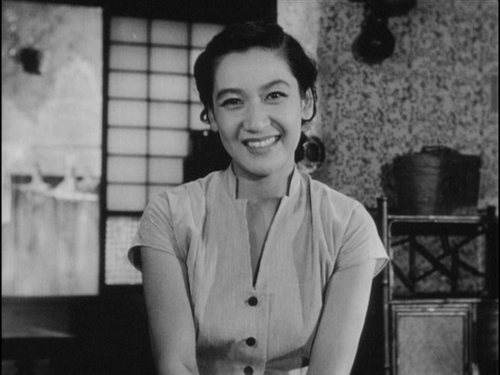
_________________________________________________________________
22. Lost in Translation (2003)
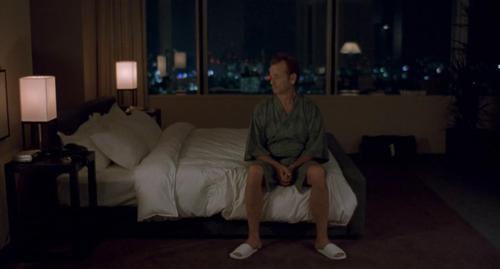
Before Scarlet Johansson played red-haired Russian spies, transcendent super-beings who can “use 100% of their brain” (seriously?) and alien sex goddesses (I heard she was really good in that movie), she was seventeen playing a woman in her twenties in this film, Lost in Translation, alongside Bill Murray. Both of them are absolutely splendid in this love letter to Tokyo as alienated Americans forming a friendship as getting lost in the cultural differences of Japan. The plot is pretty minimal and occasionally meanders into simple moments that surprisingly have a lot of resonance. It does such a great job of establishing the mood for viewers with all of its elements: its dreamy cinematography, great soundtrack and lovable performances; and it’s a perfect movie to watch on late nights. Everything just comes together so nicely in this film. “For relaxing times, make it Suntory time,” and for a great movie experience, make it Lost in Translation.
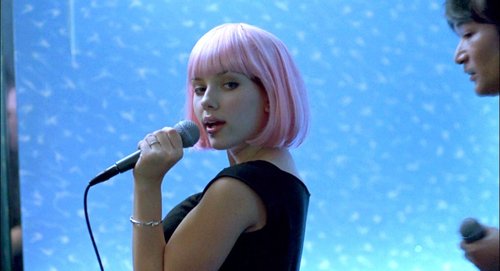
_________________________________________________________________
21. Les quatre cents coups [The 400 Blows] (1959)
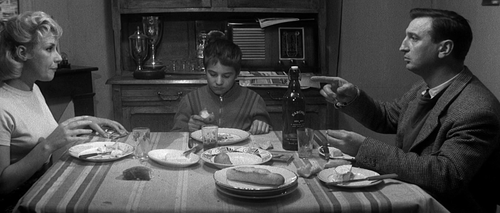
One of the highlights of the French New Wave, Les quatre cents coups is a simple yet touching account of Antoine, a child living in Paris, and the alienation that he experiences from the world around him. Based around his own experiences as a child, director François Truffaut’s directorial debut portrays days in the life of a Parisian boy in such an honest and aimless way that even if the plot doesn’t really seem to go in any direction initially it feels natural. It’s a character study that in turn shows the unreasonably constrictive conditions that children in Truffaut’s time were going through as well as the brutal treatment that was common in juvenile detention. In spite of this, the film is wonderfully pleasant and nostalgic and evocative of childhood memories. Perhaps what makes this film so poignant is how this childhood innocence is suddenly brought to an end by oppressive adults. Jean-Pierre Léaud’s performance as Antoine is impressive and cemented him into New Wave cinema as one of its finest actors, and Les quatre cents coups forever established François Truffaut as one of the most honest and grounded directors in film.
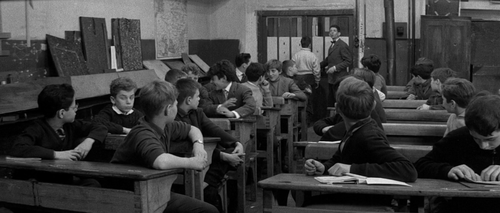
_________________________________________________________________
20. 千と千尋の神隠し [Spirited Away] (2001)
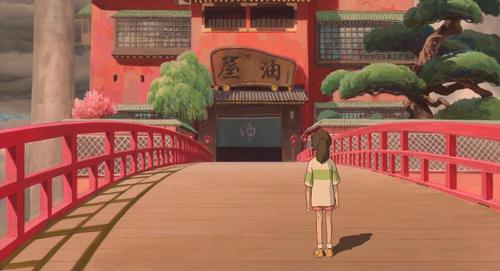
Hayao Miyazaki’s most acclaimed and recognized work, Spirited Away, isn’t my favorite Miyazaki film, but nevertheless it’s one of the best animated films I’ve seen and deserves all the attention it gets. The famous coming-of-age story is one that follows a rather tried-and-true blueprint of character development found in many narratives before it, but even then the film manages to unfold itself in such a refreshingly engaging fashion that’s truly inspiring and worth investing in. After wandering into an abandoned fairground, ten-year-old Chihiro and her parents stumble into a mystical bathhouse inhabited by spirits, and in order to save her parents and leave she must work for the bathhouse’s owner, Yubaba, and more importantly she must experience personal growth that will lead her into adulthood. With excellent animation and an iconic soundtrack from composer Joe Hisaishi, Spirited Away is quite an imaginative spectacle to behold, carrying with it themes of responsibility, friendship, and to a slightly lesser extent, environmentalism.
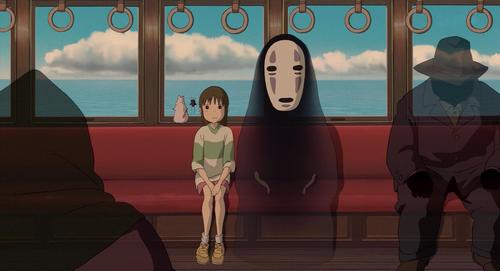
_________________________________________________________________
19. Annie Hall (1977)
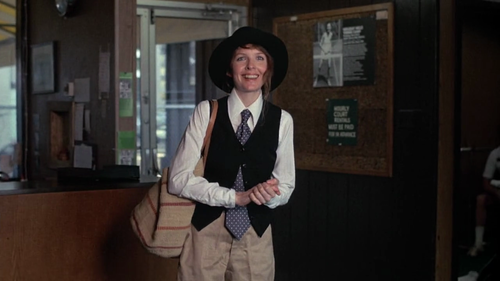
Just as Spirited Away was my introduction to Hayao Miyazaki, Annie Hall was my introduction to Woody Allen, as I’d been told by many that this was the peak of his career. Like Manhattan, it explores the dynamics of romantic relationships, but as this film was prior to Manhattan in Allen’s filmography, Annie Hall was a turning point in his career, injecting a greater sense of drama to his films and in turn refining the romantic comedy to cinematic perfection. Through the film’s protagonist played by Allen himself, Alvy Singer, it laid out Allen’s own idiosyncrasies and life experiences for everyone to see and laugh at but not in a way that oozes with self-deprecation; its humor filled with satire, fourth-wall breaking, his perspectives on his Jewish heritage and his particularly unrelenting fascination with Freud and psychoanalysis. Allen virtually plays himself alongside his former lover, Diane Keaton, who plays the eponymous romantic interest in a part written specifically for her; and the two of them act out the fictional telling of their love life in the film brilliantly. Annie Hall invites its viewers to ponder on the complications of romantic relationships as Alvy breaks the fourth-wall; it shares ideas and thoughts about romance with the audience by speaking directly to them. Wildly funny and entertaining, Annie Hall is one of the best romantic comedies cinema has to offer because of how technically and competently made it was while still being incredibly relatable and real.
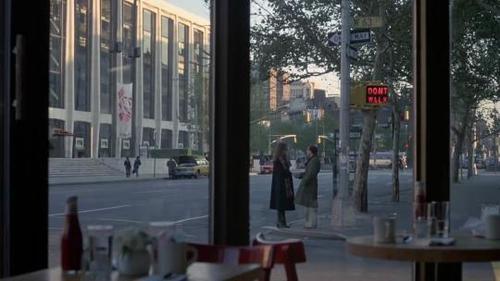
_________________________________________________________________
18. طعم گيلاس [Taste of Cherry] (1997)
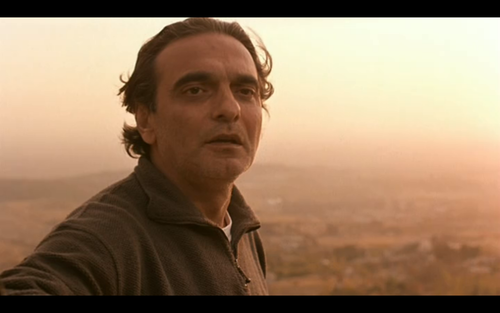
A largely meditative, existential piece; Abbas Kiarostami’s Taste of Cherry is a strangely moving film about a man who drives around town looking for someone to bury him. While it has a rather short runtime, the film eases you into itself and its situation carefully in a slow documentary-like cinematography that follows the man as he drives around, oftentimes looking from the same angle, and when he speaks to people in his car the perspectives alternate between mostly two shots, occasionally looking down at the car in a third more expansive view as it moves across the countryside, these shots being very lovely to look at. While this might sound really drawn out and boring, the film never seems to become tiresome to watch and the conversations that the characters have on the road are very interesting to listen to; Kiarostami’s writing has a philosophical and ethical drive to them that’s well-constructed, and the film seems to address the ethics of filmmaking itself by the time it reaches its conclusion.
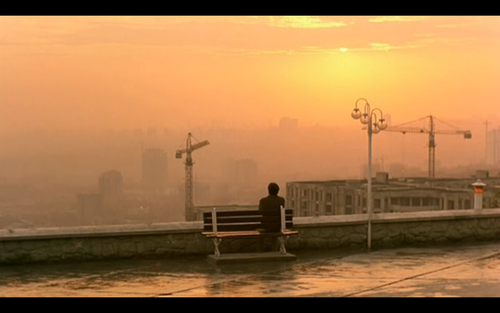
_________________________________________________________________
17. À bout de souffle [Breathless] (1960)
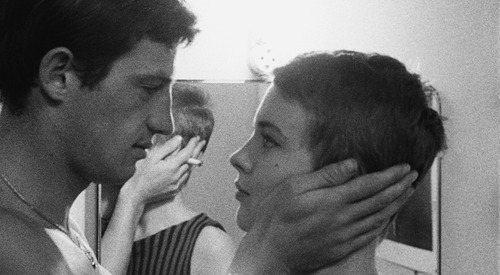
À bout de souffle is Jean-Luc Godard’s directorial debut and one of the landmark films that arrived along with the French New Wave, and for a long time the film was always something I enjoyed but never really valued as important to me. The film’s growing on me with each viewing though, as I’ve noticed that with À bout de souffle, Godard achieves this really wonderful, almost magical tonal control that has an incredibly infectious uplifting quality to it. Godard’s À bout de souffle, with a screenplay by François Truffaut, possesses a strange blend of romance and crime film that's full of wit and charm and humor, and along with its unorthodox film techniques like its extensive jump cutting, it doesn’t take itself seriously at all making for a very entertaining watch that never drags. Influential, upbeat, and romantic, À bout de souffle is a pleasant fun-filled film with interesting artistic choices and lovable performances from Jean-Paul Belmondo and Jean Seberg.
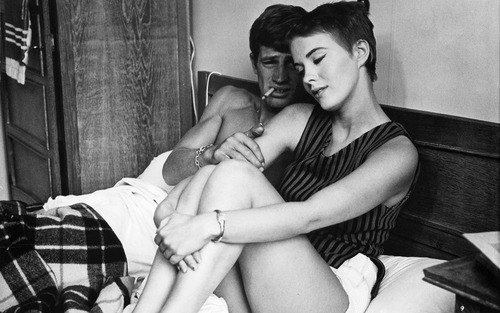
_________________________________________________________________
16. 2001: A Space Odyssey (1968)
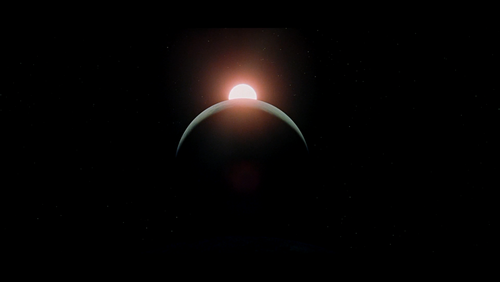
If only one film in all of cinema could be called ambitious, let it be Stanley Kubrick’s 2001: A Space Odyssey. Special effects, set design, editing; these were some of the most progressive aspects of 2001’s production with its massive set pieces and liquid visual effects. The film also has very tight and effective cinematography, competent acting and writing, and brilliant use of music and sound, with some of the film’s most unforgettable sequences being a result of Kubrick’s elegant direction set to classical music, like the carefully choreographed satellites set to the Blue Danube waltz and the film’s famous opening set to Also sprach Zarathustra. One of the most transcendent and influential science fiction movies of all time, 2001: A Space Odyssey’s colossal scope and innovative production set the bar for films of its time, and it still holds up wonderfully today, being one of the best films to ever come out of the New Hollywood years of American filmmaking.
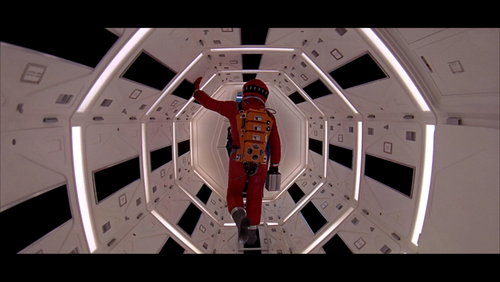
_________________________________________________________________
15. L’année dernière à Marienbad [Last Year at Marienbad] (1961)
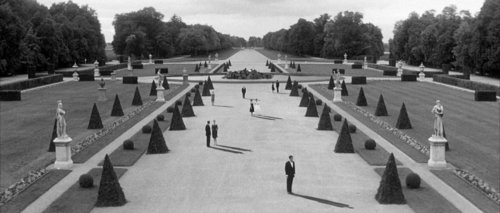
L’année dernière à Marienbad is one of those movies that simply refuses to give easy answers to its audience. Alain Resnais’ enigmatic psychological drama takes place in a large sprawling palace hotel in the countryside with labyrinthine corridors and abundant mirrors. A man stumbles upon a woman and immediately tells her that they’ve met, and while the woman doesn’t seem to agree, the man persists and divulges stories of their acquaintance over the course of the film. Marienbad is one of the most puzzling films I’ve watched, simply because by the end of it I still don’t know if the man tells the truth, if the woman is being elusive and distant on purpose or if she really doesn’t know the man. The film’s insistence on using unreliable narrative is so reminiscent of how memory actually functions that it became a great template for other films that have a similar focus or aesthetic such as Memento or The Shining. There are a lot of other moments that warrant a lot of discussion, but in terms of filmmaking Marienbad is an impressively shot, carefully-constructed narrative that’s begging to be watched in high definition, because every shot looks absolutely stunning with the film’s attention to lighting and composition; L’année dernière à Marienbad is one of the best-looking black-and-white films I’ve seen. The film also uses rather obtuse angles and an eerie organ score to instill a sense of tension to the audience, and uses its maze of hall of vaulted hallways to its advantage. At the end of the day, L’année dernière à Marienbad is an art film that’s very challenging to watch, but it encompasses such a large variety of ideas with a rather simple premise that makes it somehow relatable and poignant to its viewers and makes it a film that’s definitely worth watching.
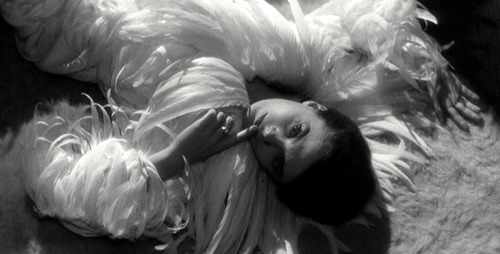
_________________________________________________________________
14. La double vie de Véronique [The Double Life of Véronique] (1991)
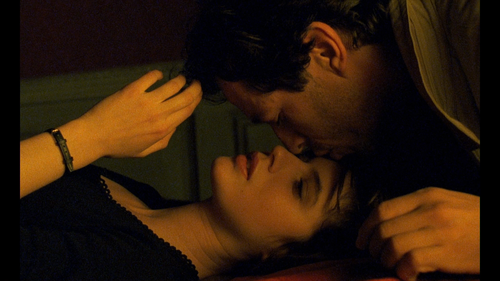
I like to say that Polish director Kryzsztof Kieślowski makes near-religious experiences, not simply films, and it certainly felt that way after watching La double vie de Véronique for the first time. Véronique is a minimal yet metaphysical work; a tale of two women in different locations, the Polish Weronika and the French Véronique, who have a strange inexplicable bond. Both are played by actress Irène Jacob, who has impressive range portraying the two culturally different women, dividing them with their own sensibilities and mannerisms. It’s one of those films that’s very difficult to explain and comprehend, and yet it feels so poignant and resonant. With its golden tint and graceful cinematography, this film is already jaw-dropping to watch, and when the film is set to Zbigniew Preisner’s evocative score, La double vie de Véronique is a hauntingly beautiful sensual experience that explores basic, inherent human connections.
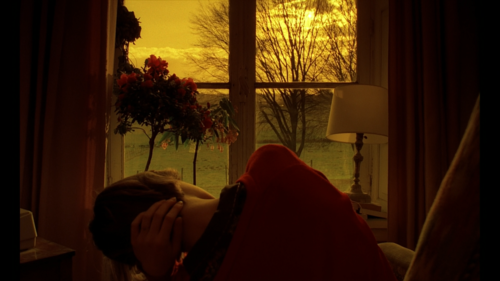
_________________________________________________________________
13. Persona (1966)
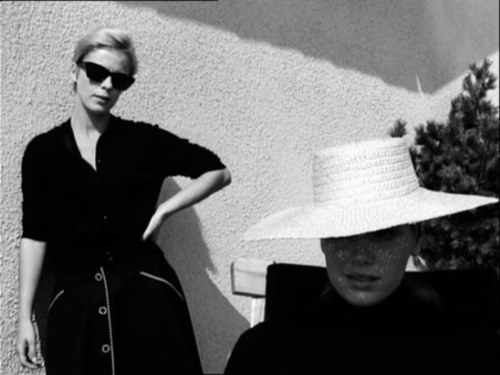
One of cinema’s most poignant psychological thrillers, Swedish director Ingmar Bergman’s Persona is a great example of what an art film perhaps should be, bringing many fascinating ideas into film and simultaneously engaging its audiences with a strong sense of relevance that can be applied to our lives, all the while being a visually beautiful piece of cinema. There aren’t many films that evoke the full spectrum of emotion as well as Persona does; a large part of this film is very relatable and moving, some moments are melancholy and others are passionate, some moments are rather playful and cheerful, and sometimes the film’s outright horrifying. Following the interactions between a social recluse and a benevolent nurse as they live in solitude at a beach house, Persona delves into ideas of identity and social interaction in such a way that feels incredibly natural, and yet at the same time there are larger themes and undertones that run throughout, finally forming into a story that can be approached from many angles and interpretations.
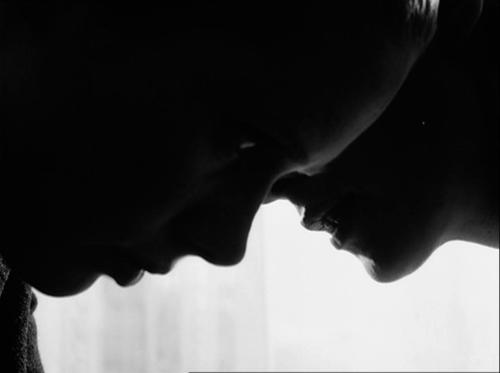
_________________________________________________________________
12. となりのトトロ [My Neighbor Totoro] (1988)
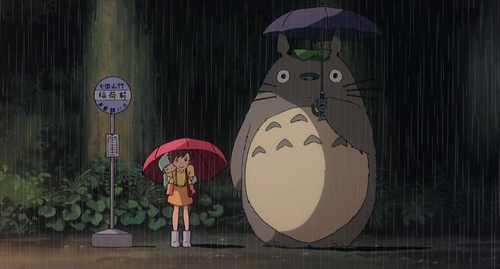
Anyone who knows me pretty well and talked to me about Miyazaki’s films extensively would know that regarding My Neighbor Totoro I’d often say that the film isn’t a children’s film but rather a film about children. My Neighbor Totoro is in essence a children’s film and while it’s marketed and targeted at them it’s certainly accessible to everyone. But there’s something so innately and inexplicably moving about Totoro that makes it seem clear to me that while children will obviously enjoy this film, I think people who have outgrown the target demographic would ultimately get a greater viewing experience out of My Neighbor Totoro, because it brings about a touching and charming sense of nostalgic wonder that brings me to tears. Totoro is a film with children in it, and they have childlike concerns and experiences and ideas and curiosities, and the film presents this in the best way possible. In spite of the fact that My Neighbor Totoro is a film whose titular character is a giant furry forest spirit that lives in an enormous tree and one of its friends is a Catbus—which is exactly what that sounds like—it is probably one of the most believable presentations of what childhood looks and feels like.
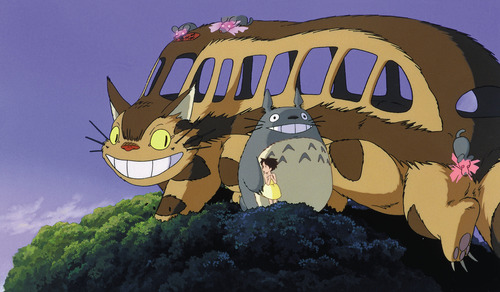
_________________________________________________________________
11. Eternal Sunshine of the Spotless Mind (2004)
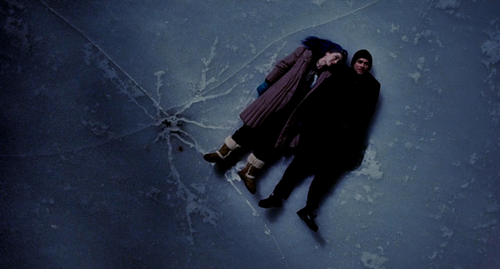
Years have passed since I watched this film for the first time and it’s occurred to me that in my mind, Eternal Sunshine of the Spotless Mind, at least in a filmmaking standpoint and when compared to other films, isn’t exactly something that’s groundbreaking or particularly spectacular. That’s not to say that the film doesn’t have its own merits; it has interesting ways of seamlessly sewing memories together with its cinematography and editing, strong performances from a rather weird set of cast members, and a nice soundtrack. But while the elements seem to pale in comparison technically and mechanically from other films, what still draws me to Eternal Sunshine of the Spotless Mind is the emotional punch this film has and how much I can relate to it personally. It’s absolutely uncanny to me how much this film seems to just nail it when it portrays and discusses relationships. I’ve watched Eternal Sunshine of the Spotless Mind every year around Valentine’s Day for like the past three or four years now, and it still hasn’t gotten old.
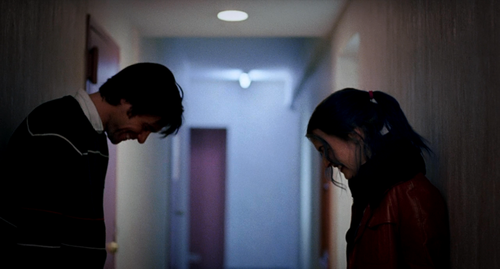
_________________________________________________________________
10. 火垂るの墓 [Grave of the Fireflies] (1988)
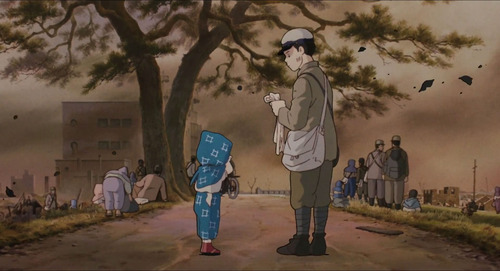
Ask anyone who’s seen Grave of the Fireflies about it and most of them will tell you things like how sad it is and how much they cried and “bring tissues” and all of that. Well believe the hype, because the anti-war film centered on two Japanese children trying to get by in World War II is devastatingly beautiful and a fine animated film. Unlike even most anti-war films, Grave of the Fireflies takes most of its time not portraying war on the battlefield but instead focuses on displaying the aftermath of war, its effects on civilian life. In particular, most of the film involves simply watching the characters doing rather mundane things while living in terrible conditions. Even with how grounded in realism the film is, it doesn’t hesitate to be imaginative in its expression and takes full advantage of its limits as an animated film. Without even a speck of reverence to the act of war, Grave of the Fireflies is a scathing criticism of war in the subtlest ways possible.
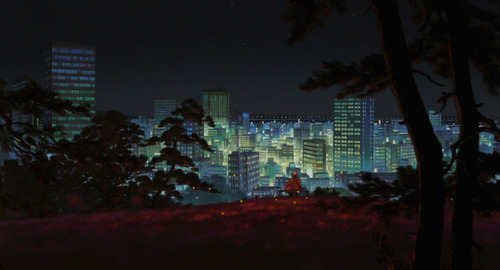
Trois couleurs: Bleu begins the trilogy with the character study of Julie de Courcy, the wife of an internationally established composer who, along with his daughter, died in a car crash. Julie is the only survivor of the accident and as a result she attempts to break free of all of her bonds and ties to her family, her past, and the world around her. Trois couleurs: Bleu is Kieślowski’s tour de force, a magnificent achievement of the cinematic medium. Everything in this film is simply done to utmost perfection and Bleu takes advantage of every aspect of film to create a moving masterpiece. As the title suggests, the color blue dominates the film visually, and the cinematography is so brilliant as it truly expresses with images alone themes and motifs of the film; it uses the language of film to the fullest. With that in mind, the film’s dialogue is superb and the score by Zbigniew Preisner is hands-down one of the best soundtracks in cinema. Particularly, the score actually plays a role in the film, haunting Julie’s thoughts as she tries to forget her husband and her past. Juliette Binoche’s performance as Julie is outstanding and really carries the film to great heights. From the film’s tragic outset to its transcendent finale, Trois couleurs: Bleu soars triumphantly over films of its class with fluent cinematic expression and emotional depth.
_________________________________________________________________
9. Pierrot le fou [Pierrot the Fool] (1965)
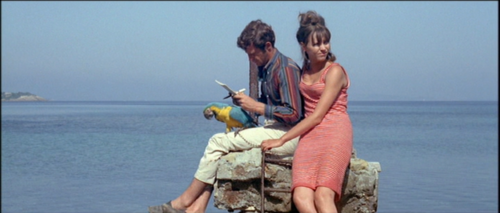
One of the last landmarks of the French New Wave (I’ll shut up about French New Wave soon, I promise) and one of the last films of Jean-Luc Godard before fully entering his Maoist phase, Pierrot le fou is a strange mixed bag of consumerist satire and criticism of the Vietnam War while also being a crime film and a road movie all at once, with the occasional musical number. Being his first film in color, Pierrot le fou has a wonderfully diverse color palette to add to the excellent cinematography. As with many of his films, several scenes and dialogues in the film are improvised and are thus pretty whimsical and strangely amusing at times; and there are some particular vignettes that I enjoy dearly, full of corny dialogues and one-liners. Pierrot le fou was my introduction to Godard and to French New Wave in general, and because of this the film is rather influential to me because it introduced me to some of the more unorthodox methods of filmmaking. And despite the oddities and sometimes outright arbitrary silliness, there are a couple of moments in the film that I can relate to as a viewer of what some call a rather solipsistic work of cinema.
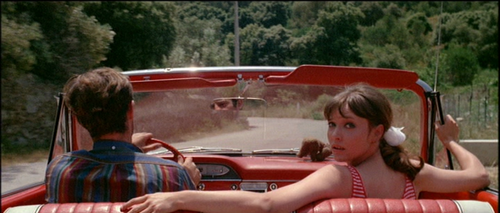
_________________________________________________________________
8. 紅の豚 [Porco Rosso] (1992)
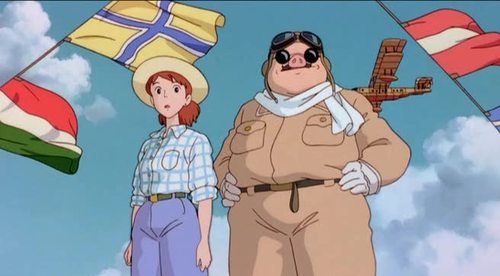
For a film about an anthropomorphic pig who flies planes, Porco Rosso sure has a lot of subtlety and depth to it, all the while remaining cheerful and optimistic like most of Miyazaki’s films. For a film about flying pigs, it’s rather grounded in its portrayal of a fictional pre-World War II and Fascist Italy as well as its presentation of romance. Porco Rosso may not be as wildly imaginative and fantastical as Miyazaki’s other works, but it still holds as much emotional weight and carries along with it a great degree of gentle sensibility and nuance not found in the rest of his filmography. It has, I think, the most developed mood in a Miyazaki film, surrounded by an air of carefree adventure and humor and supported by effortless storytelling. Despite essentially epitomizing some of Miyazaki’s strongest passions and concerns with the world, Porco Rosso is an underappreciated film from his career and a must-watch for any lover of animation.
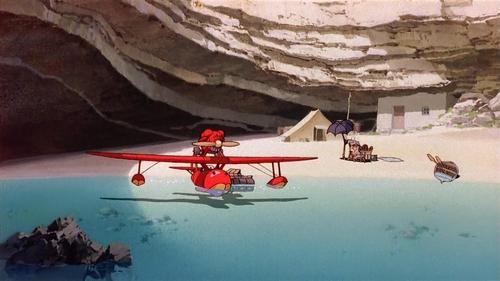
_________________________________________________________________
7. The Third Man (1949)
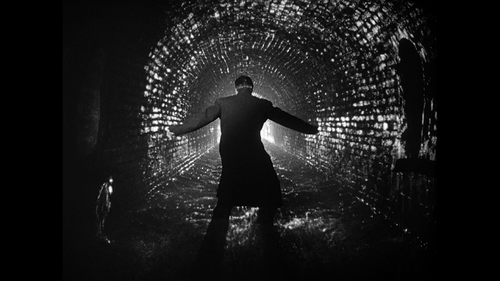
The Third Man is one of the best examples of a film with every aspect working perfectly together to make an end result that just feels pleasant to watch. And despite this it’s a movie of paradox. The Third Man is the paragon of film noir, a masterfully suspenseful movie with incredible control over contrast between light and dark, abundant Dutch angles, and a nicely paced plot full of intrigue. The strange thing is that the film also has this wonderful tonal quality to it somewhere between melancholy and cheerful. Perhaps the strongest contribution to this is Anton Karas’ lovely zither score, a quintessentially Austrian aural aesthetic choice that seems out of place for a film of suspense but somehow it works beautifully. The screenplay by Graham Greene is full of witty and biting humor and clever dialogue without ever getting corny like many earlier works of film noir, yet some of the events are rather grave and solemn. Carol Reed’s The Third Man is an ultimately bittersweet film with unique aesthetic choices and graceful storytelling.
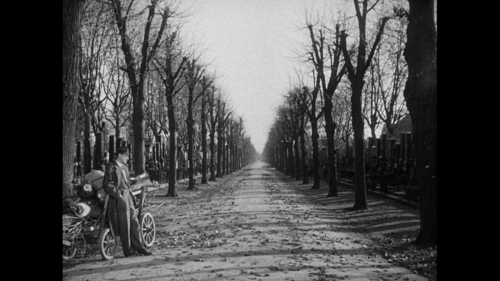
_________________________________________________________________
6. もののけ姫 [Princess Mononoke] (1997)
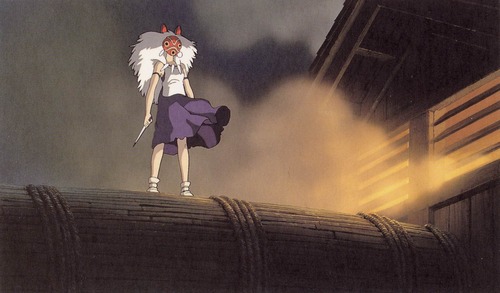
Princess Mononoke is Hayao Miyazaki’s grand period epic, encompassing all of his concerns and themes and expressing them in a way that’s engaging and appropriate; never decaying into a pedantic lecture about environmentalism, pacifism, or feminism but instead letting these ideas flow through its storytelling and characters. After being cursed by a demonic enraged boar god from the forest, Prince Ashitaka of the Emishi is exiled from his village and embarks on a journey to search for a cure while finding himself caught between a conflict between nature and man. Princess Mononoke is a sight for sore eyes in a world where 3D animation is now the norm, and it was a turning point in Studio Ghibli’s animation, with a seamless blend of hand-drawn and computer-generated animation, and arguably Studio Ghibli never accomplished a film with such unnoticeable CGI weaved into it. The film’s story has a rather large scale to it, its cast of characters pretty wide and fleshed out, its events carrying high stakes. One of the strongest suits of the film lies in its lack of painting antagonists as intrinsically evil people. Even the most antagonizing forces in the film have their own saving graces that ultimately make them human beings who share a world with talking animals and spirits. At the end of the day, Princess Mononoke is a deeply moving film full of imagination, cultural inspiration, and thematic urgency; a call to peace between humanity and nature.
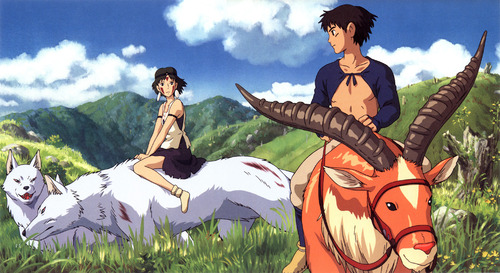
_________________________________________________________________
5. Vivre sa vie [To Live Her Life] (1962)
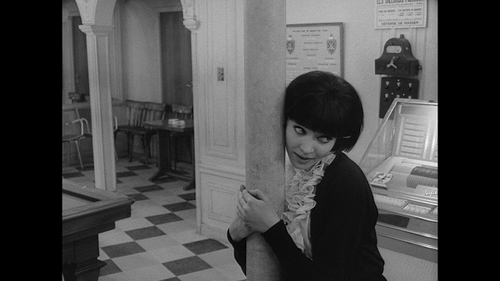
Vivre sa vie was a film that didn’t really stick with me on my first viewing. Though I could sort of tell that it was done in a very interesting fashion cinematically, it wasn’t until I watched Vivre sa vie a second time that I felt so personally invested in the story itself and the central character and the themes that the film was trying to tell. Titled fully as Vivre sa vie: Film en douze tableaux (To Live Her Life: Film in twelve scenes), the film tells the story of Nana—played by Anna Karina—an aspiring actress who becomes a prostitute to earn a living. It’s separated into twelve shorter sequences of varying length, justifying a perhaps disjointed narrative for vignettes into Nana’s life and her mannerisms and ideas. Through these twelve scenes, we see Nana’s growing resolve to live a fulfilling life in spite of the conditions and circumstances. Many of the scenes, such as Nana watching The Passion of Joan of Arc (this, in particular, is done to perfection)or her pool room dance, are incredibly memorable as a result of Jean-Luc Godard’s stylistically brash direction and some particularly brilliant yet sometimes dense dialogue (Nana speaking with a philosopher comes to mind) bleeding into a more grounded, emotional piece. The cinematography is evocative and sometimes rather angular; and in tandem with the film’s jarring editing with jump cuts and intertitles, Vivre sa vie demands the viewer’s attention by increasing their perception of the fact that they’re watching a film and in the end, the film seems to express Godard’s questions about cinema itself and his concerns about the limitations of language, perhaps serving as a subconscious foreshadowing for a landmark film in his Maoist phase, Week-end, which declares the end of cinema.
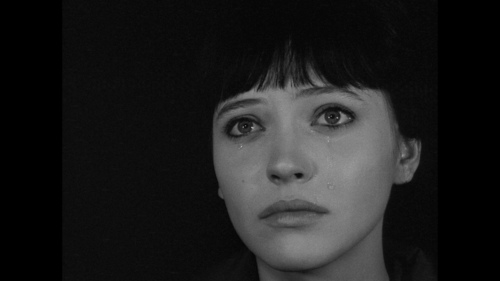
_________________________________________________________________
4. ユリイカ [Eureka] (2000)
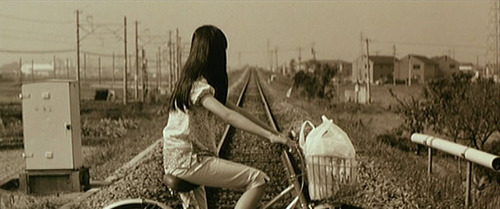
I feel like I went through a little journey of my own just to watch this three and a half hour long road movie. After reading about it on a website and looking it up on Wikipedia, noting its acclaim at the 2000 Cannes Film Festival, I was intrigued and gradually I had this rather irrational determination to watch this film once I realized how strangely difficult it was to get my hands on it. Having never been released in America, the only way I could even view the film was buy a copy from Hong Kong over Amazon (apparently it shares the same region code with the US), and even that has the quality of virtually a bootleg. Despite poor viewing conditions, watching Eureka was an emotional ride at a pretty rough time in my life. Watching it again when things perhaps aren’t as bad, the film still has just as much resonance and beauty as it did the first time. Eureka is a carefully paced, meditative film that takes its time and draws you into itself with melancholy sepia photography that’s just breathtakingly beautiful and gorgeous cinematography with smooth, long takes; it’s baffling how lovely some of these shots are. This film begs to be watched in Blu-ray or HD but I haven’t found any sort of release like that anywhere (where’s Criterion when you need them?) The acting is natural and grounded and never feels like anyone’s overacting. The writing’s subtle and realistic and speaks volumes while never devolving into philosophical or existential ramblings. Add all of those things with incredibly emotional moments and one of my favorite denouements in all of cinema and you’ve got this wonderful film. A story of finding oneself, accepting the past and starting over; Eureka invites you to reflect and love the small, seemingly trivial things in life.
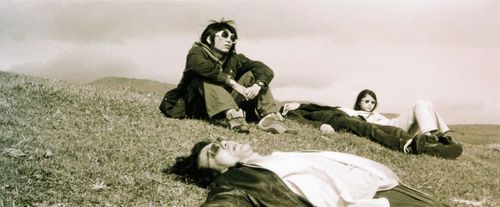
_________________________________________________________________
3. 花樣年華 [In the Mood for Love] (2000)
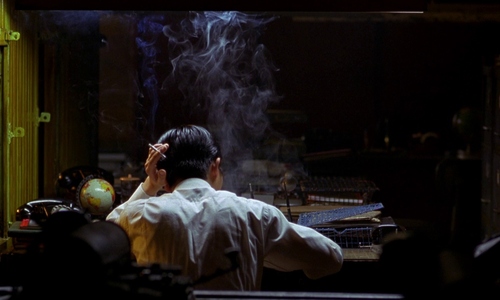
In the Mood for Love is easily one of the most beautiful films I’ve ever laid my eyes on. Its graceful cinematography from Christopher Doyle is absolutely stunning, capturing the actors’ movements in slow-motion like they’re dancing together; its colors lush with particularly intense reds. It’s probably Wong Kar-Wai’s most minimal film as it tells the simple tale of a husband and a wife from different married couples developing a close bond after discovering their spouses had an affair together, complemented by an equally sparse soundtrack dominated with “Yumeji’s Theme” by Shigeru Umebayashi as a leitmotif for their relationship and Nat King Cole singing songs in Spanish. This is a film that truly focuses on evoking emotion through the images themselves rather than relying on the actors or the plot to do so. The plot itself is still very engaging and well-written, and the performances from Tony Leung Chiu-Wai and Maggie Cheung are full of nuance and refinement, working wonderfully in line with the entire film’s subtlety and beauty. In the Mood for Love is a meticulously constructed film with an incredibly romantic sensibility that doesn’t devolve into rampant eroticism, and that in and of itself makes it a film of great substance.
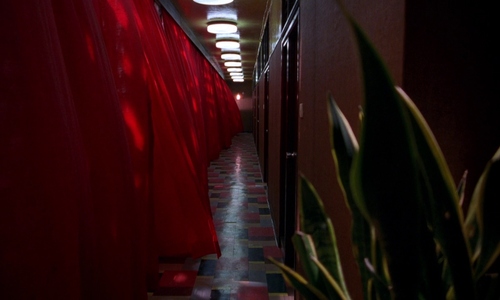
_________________________________________________________________
2.Trois couleurs: Bleu [Three Colors: Blue] (1993); Trois couleurs: Rouge [Three Colors: Red] (1994)
The first and last entries of Kryzsztof Kieślowski’s Three Colors trilogy, which explores the French Revolutionary ideals of liberté, égalité, fraternité in a human context. I love both Trois couleurs: Bleu and Trois couleurs: Rouge so much that it’s hard for me to pick one over the other, so they’re tied for second and I’m just going to leave it at that. The most I can say is that perhaps Bleu gets a slight advantage over Rouge, but it’s a fine line…
Trois couleurs: Bleu [Three Colors: Blue] (1993)
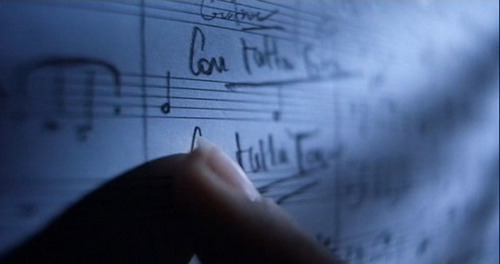
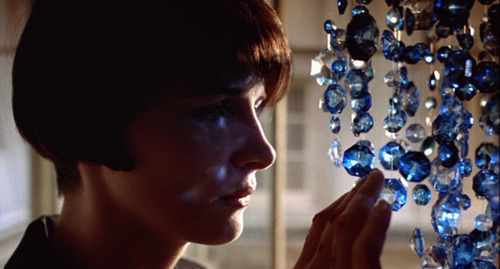
Trois couleurs: Rouge [Three Colors: Red] (1994)
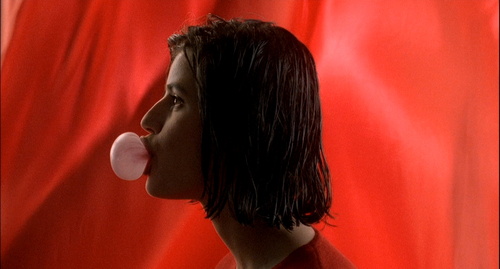
Kieślowski’s Three Colors trilogy concludes with Trois couleurs: Rouge, which mainly follows Valentine Dussaut, a kindhearted model who begins an unexpected friendship with a retired judge, Joseph Kern. What makes this film so great to me is its explorations of more metaphysical things between human relationships, and its particular interest in possibilities or coincidences forming bonds between people. Rouge not only suggests that there is an inexplicable basic or primordial bond between human beings that precedes the first impression, but that there is a vague “irrational order” to things and yet there is perhaps room for cosmic error. It’s kind of hard for me to explain why I like this film in terms of what it does thematically, at least without spoiling the film; it certainly wraps up all of the themes that run throughout all three of the films in magnificent fashion. In terms of what this movie is from a filmmaking standpoint, it is yet another masterpiece with particularly outstanding attention to natural lighting, which gives this film a very clean look. The cinematography is gorgeous and seems effortlessly graceful. As is the same with Bleu, Rouge is dominated by reds and brighter yellows and oranges, and generally speaking the film is a little more lighthearted than the rather grave Bleu, but it has its fair share of emotionally resonant moments, played out by great performances from Irène Jacob and Jean-Louis Trintignant. Trois couleurs: Rouge is a beautiful capstone of the trilogy and unfortunately Kieślowski’s swansong before his untimely death a few years after the film’s release.
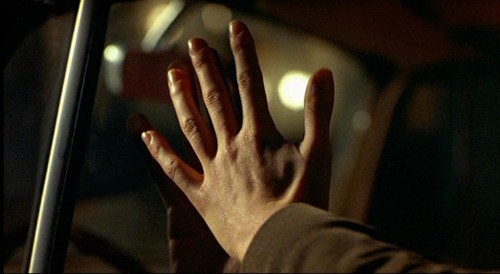
_________________________________________________________________
1. 重慶森林 [Chungking Express] (1994)
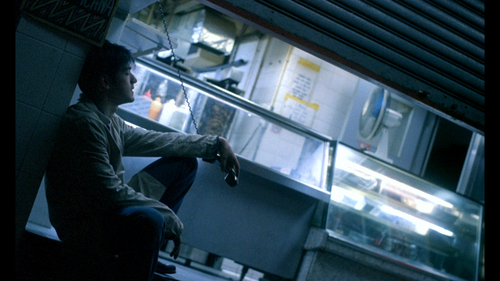
Chungking Express just gets to me in all the right places. It’s a feel-good sort of film, but it also has a lot of interesting narrative decisions, stylish handheld cinematography that ranges from dreamy to erratic high frame-rate slow-motion, and a sense of romantic longing drifting throughout. It’s a pleasant film about romance without being too saccharine and actually being rather grounded in spite of how whimsical some of the characters are. The narrative is split into two parts—both love stories involving police officers—vaguely connected by the similar setting and occasional cameos. Tony Leung and Faye Wong pretty much steal the show here by the film’s second half, but Takeshi Kaneshiro and Brigitte Lin as a lovesick cop and a stone-cold smuggler are pretty memorable. The film’s soundtrack is equally memorable, particularly famous for its constant use of “California Dreamin’” by The Mamas & the Papas and “Things in Life” by Dennis Brown, as well as Faye Wong covering “Dreams” by The Cranberries. Infused with unmatchable style and tonal control with universally relatable themes, Chungking Express is my absolute favorite film if I had to pick one, and it cheers me up every single time I watch it in spite of what goes on in life.
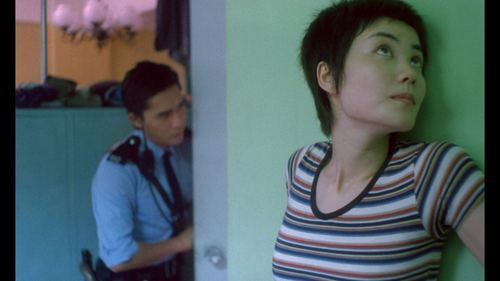



![Indiana Jones: The Complete Adventures (Raiders of the Lost Ark / Temple of Doom / Last Crusade / Kingdom of the Crystal Skull) [Blu-ray]](https://m.media-amazon.com/images/I/61Zez0dxqpL._SL160_.jpg)

![Nausicaä of the Valley of the Wind (Bluray/DVD Combo) [Blu-ray]](https://m.media-amazon.com/images/I/51chDqFvp7L._SL160_.jpg)

![Le samouraï (The Criterion Collection) [Blu-ray]](https://m.media-amazon.com/images/I/414lZQtQ5dL._SL160_.jpg)
![Jules and Jim (The Criterion Collection) [Blu-ray + DVD]](https://m.media-amazon.com/images/I/41orL6UqiIL._SL160_.jpg)
![Throne of Blood [Blu-ray]](https://m.media-amazon.com/images/I/41CU+JzsJAS._SL160_.jpg)

![Three Colors: Blue, White, Red (The Criterion Collection) [Blu-ray]](https://m.media-amazon.com/images/I/51HV0EoZuGL._SL160_.jpg)
![Blade Runner: The Final Cut (BD) [Blu-ray]](https://m.media-amazon.com/images/I/51592FMrPPL._SL160_.jpg)
![Close-Up (The Criterion Collection) [Blu-ray]](https://m.media-amazon.com/images/I/61qHwNdjeiL._SL160_.jpg)

![The Thin Red Line (The Criterion Collection) [Blu-ray]](https://m.media-amazon.com/images/I/41i2q0yG0NL._SL160_.jpg)

![Only Yesterday [Blu-ray]](https://m.media-amazon.com/images/I/51X5g6j2+xL._SL160_.jpg)
![The Royal Tenenbaums (The Criterion Collection) [Blu-ray]](https://m.media-amazon.com/images/I/517NZVlwUKL._SL160_.jpg)
![Seven Samurai (The Criterion Collection) [Blu-ray]](https://m.media-amazon.com/images/I/31gmvs4VbNL._SL160_.jpg)
![The Girl Who Leapt Through Time ( Toki o kakeru shôjo ) [ NON-USA FORMAT, Blu-Ray, Reg.B Import - United Kingdom ]](https://m.media-amazon.com/images/I/51vOcydOZgL._SL160_.jpg)
![Wings of Desire (The Criterion Collection) [Blu-ray]](https://m.media-amazon.com/images/I/41O-4jFMJgL._SL160_.jpg)

![Pulp Fiction [Blu-ray]](https://m.media-amazon.com/images/I/615YKIBRACL._SL160_.jpg)

![Manhattan [Blu-ray]](https://m.media-amazon.com/images/I/51RbSrqul-L._SL160_.jpg)

![Tokyo Story (The Criterion Collection) [Blu-ray]](https://m.media-amazon.com/images/I/51Hy86XmnDL._SL160_.jpg)
![Lost in Translation [Blu-ray]](https://m.media-amazon.com/images/I/5186D8cwfIL._SL160_.jpg)
![The 400 Blows (The Criterion Collection) [Blu-ray]](https://m.media-amazon.com/images/I/51UH-mDrY1L._SL160_.jpg)
![Spirited Away [DVD]](https://m.media-amazon.com/images/I/41xp6AJhRxL._SL160_.jpg)
![Annie Hall [Blu-ray]](https://m.media-amazon.com/images/I/41XRF4LRfeL._SL160_.jpg)

![Breathless (The Criterion Collection) [Blu-ray]](https://m.media-amazon.com/images/I/51cx3fpRWzL._SL160_.jpg)
![2001: A Space Odyssey [Blu-ray]](https://m.media-amazon.com/images/I/416G7NgqgyL._SL160_.jpg)
![Last Year at Marienbad (The Criterion Collection) [Blu-ray]](https://m.media-amazon.com/images/I/31RGs30UdPL._SL160_.jpg)
![The Double Life of Veronique (The Criterion Collection) [Blu-ray]](https://m.media-amazon.com/images/I/41XYSLweF1L._SL160_.jpg)




![Pierrot le fou (The Criterion Collection) [Blu-ray]](https://m.media-amazon.com/images/I/51ZFaZOOX3L._SL160_.jpg)
![Porco Rosso [DVD]](https://m.media-amazon.com/images/I/41yb07SlfDL._SL160_.jpg)


![Vivre sa Vie (The Criterion Collection) [Blu-ray]](https://m.media-amazon.com/images/I/41xHhsnVYtL._SL160_.jpg)

![In the Mood for Love (The Criterion Collection) [Blu-ray]](https://m.media-amazon.com/images/I/51JXmAhAGSL._SL160_.jpg)
![Chungking Express (The Criterion Collection) [Blu-ray]](https://m.media-amazon.com/images/I/512i+rhUasL._SL160_.jpg)
